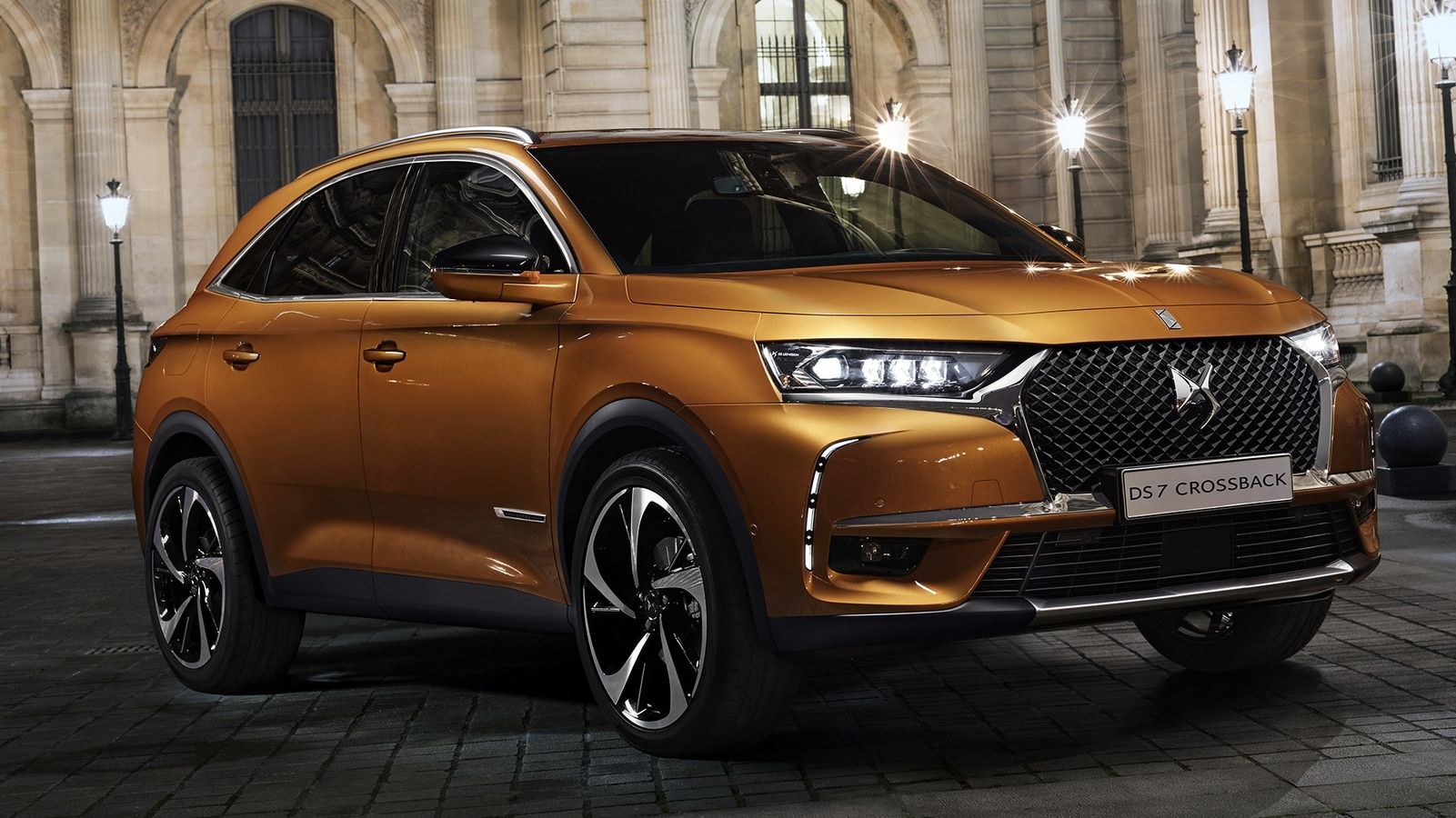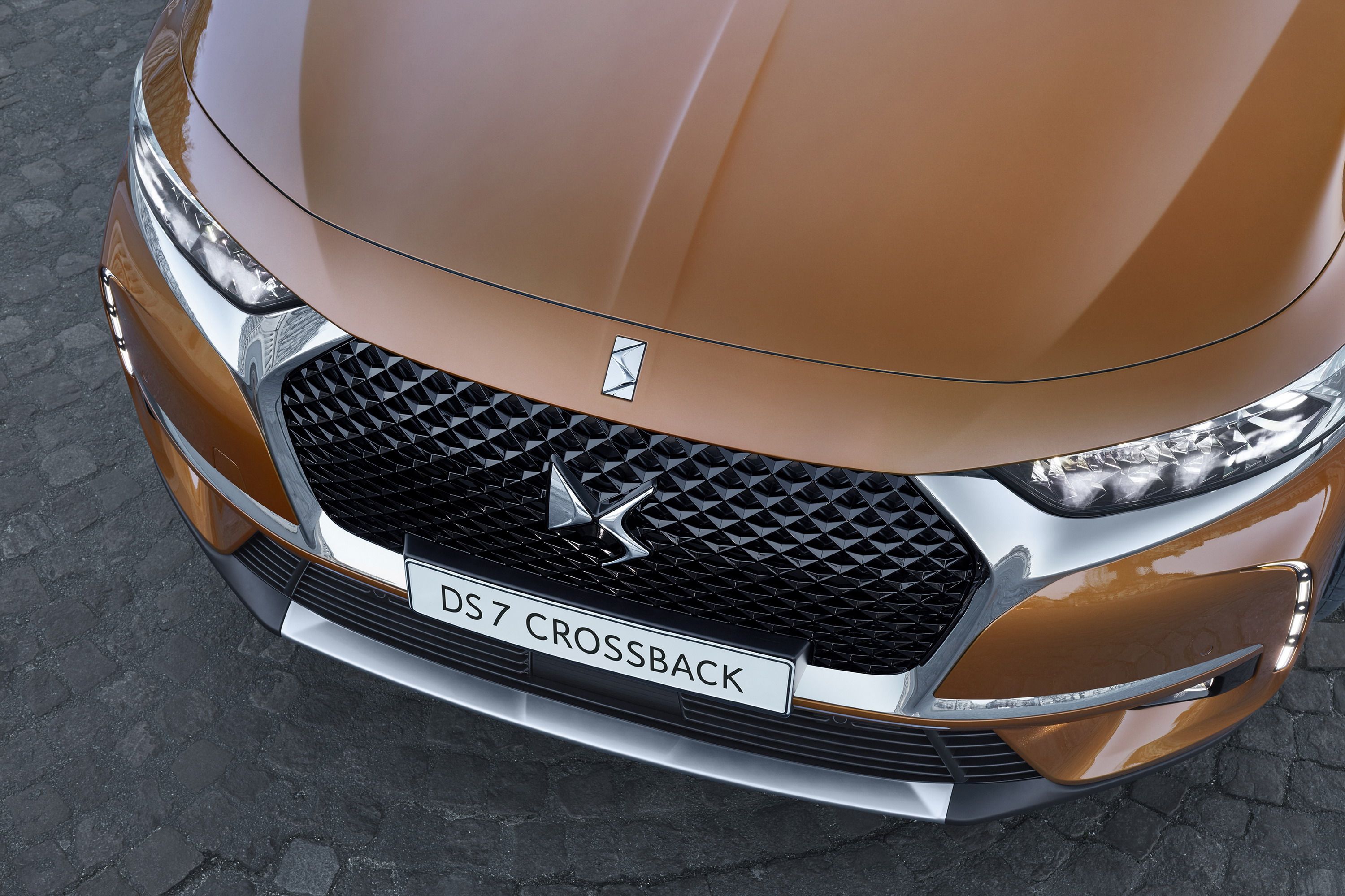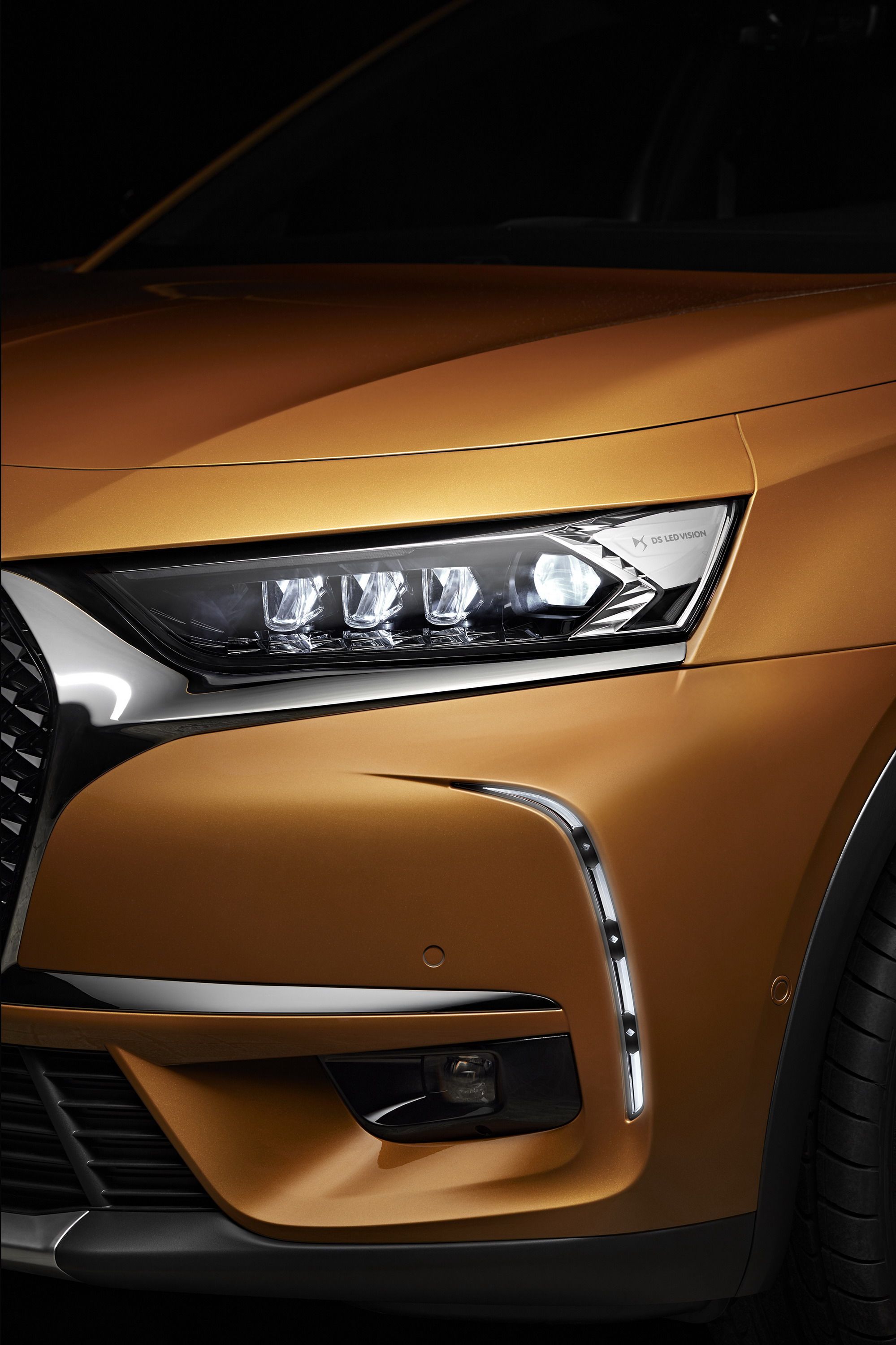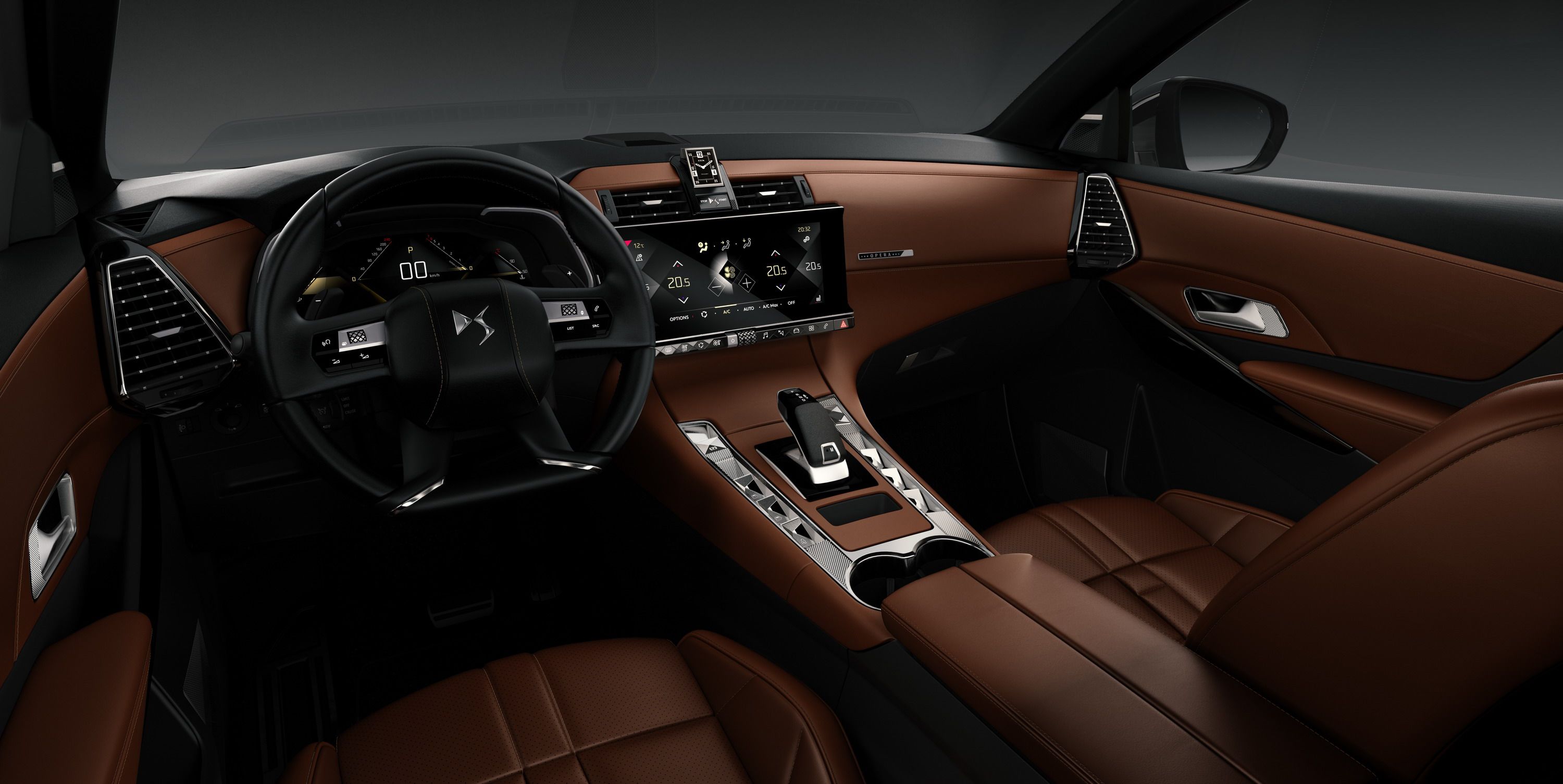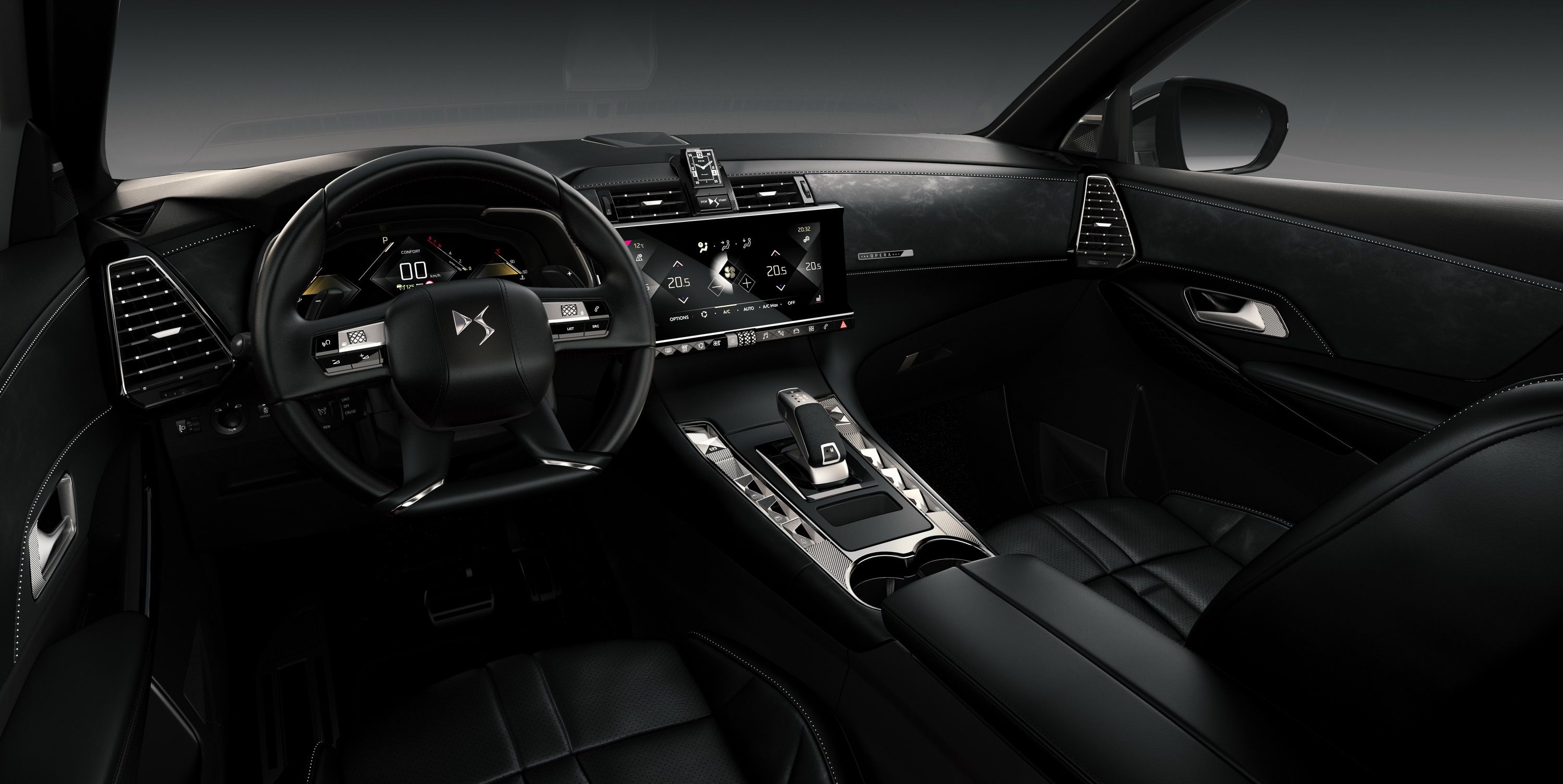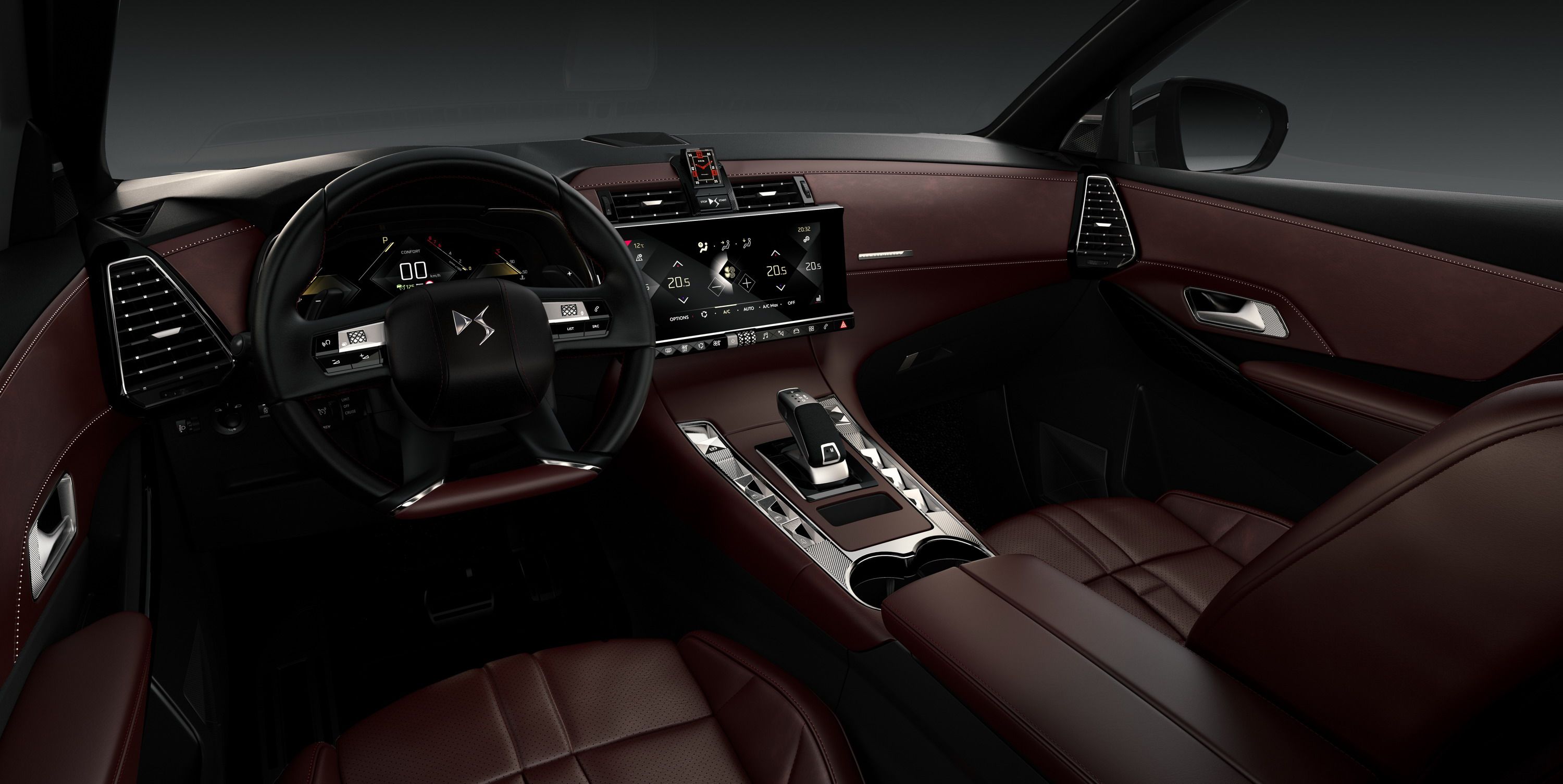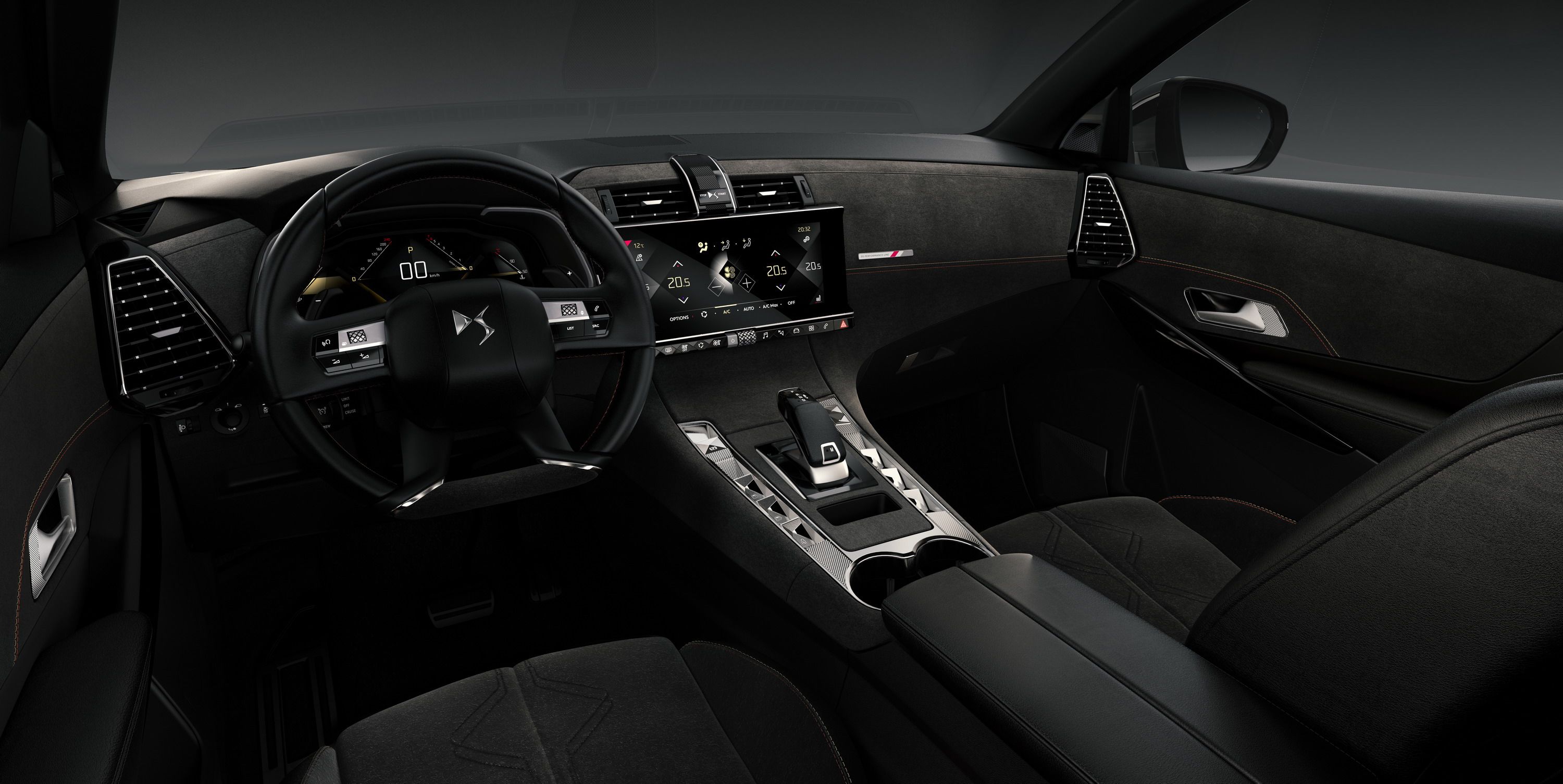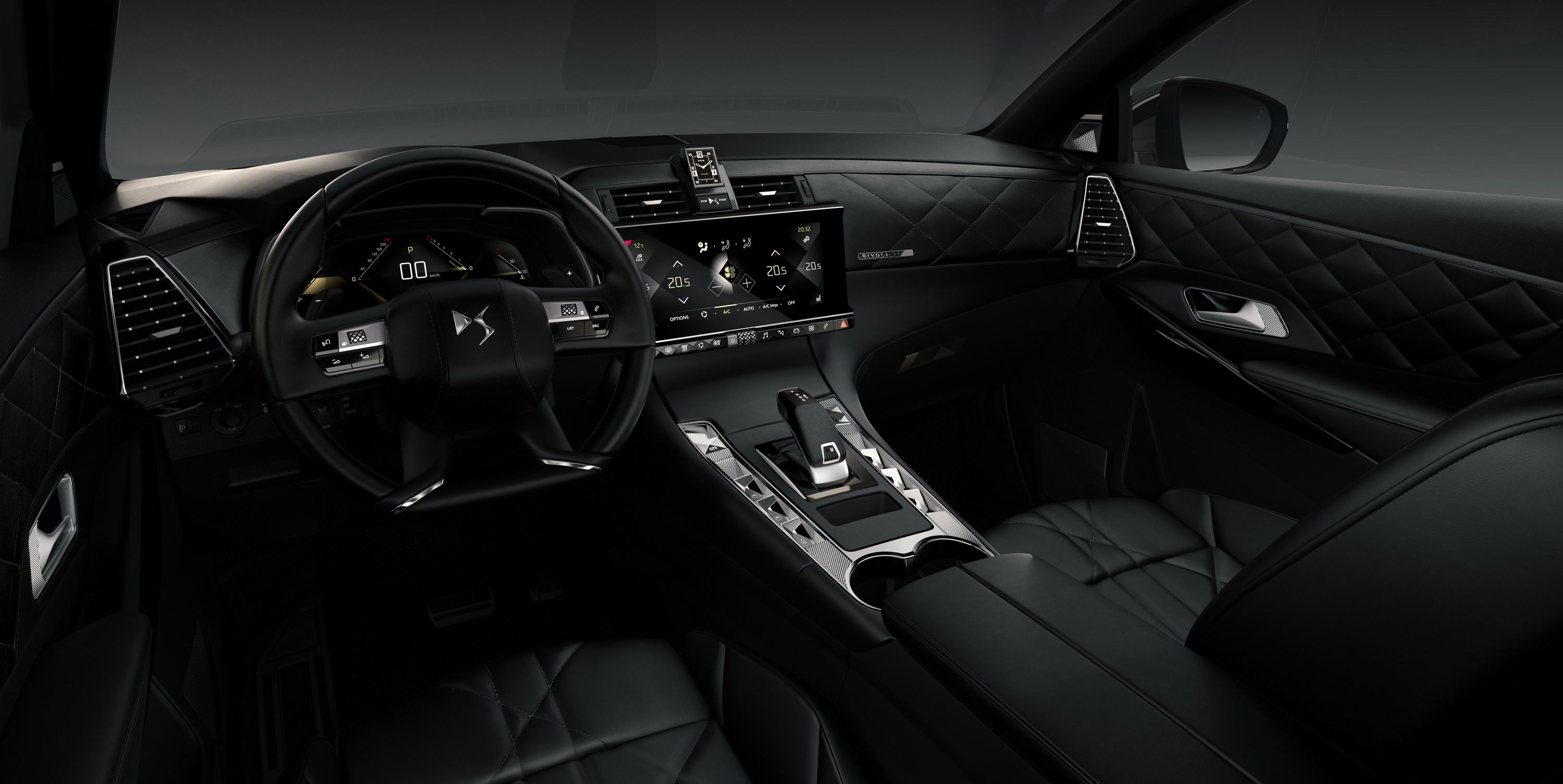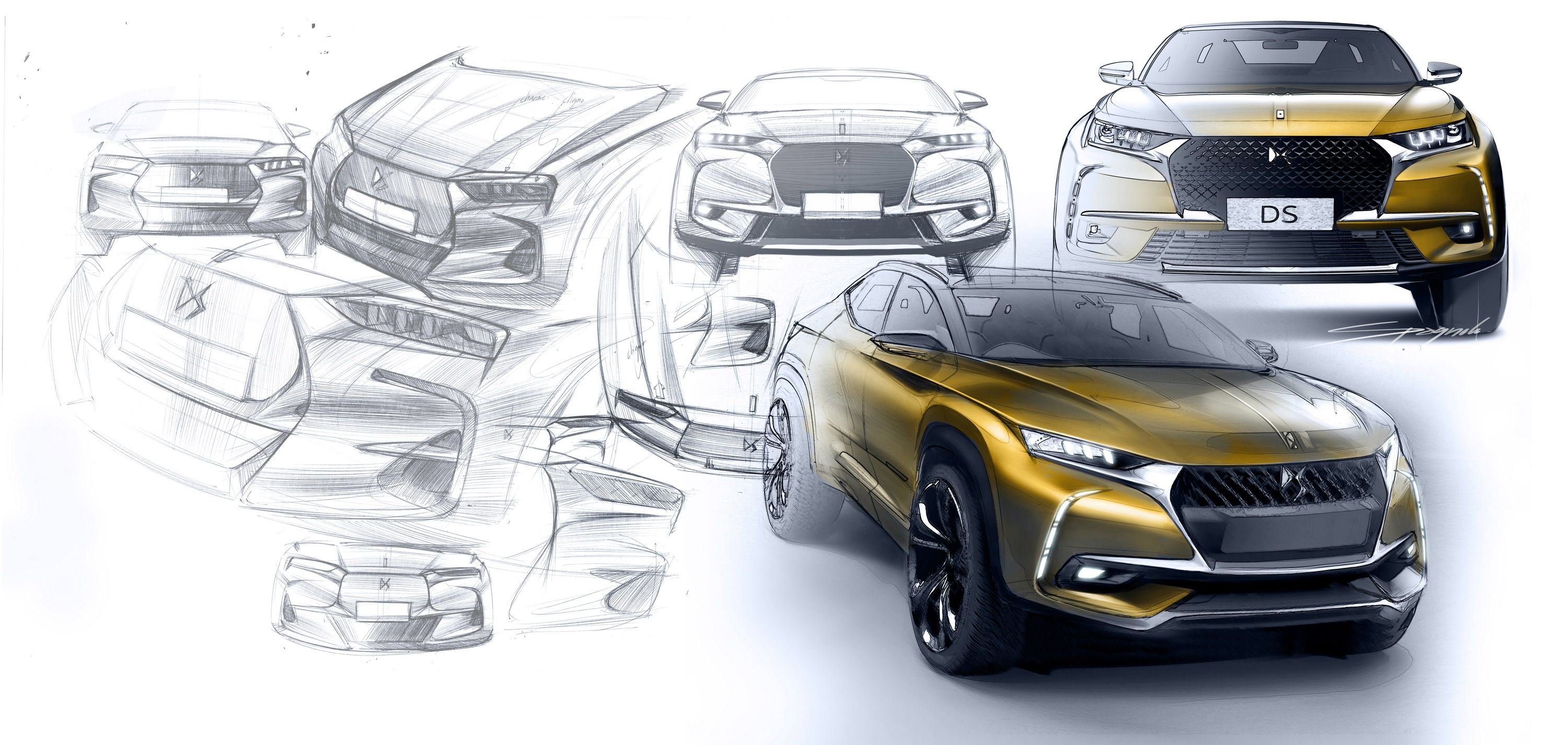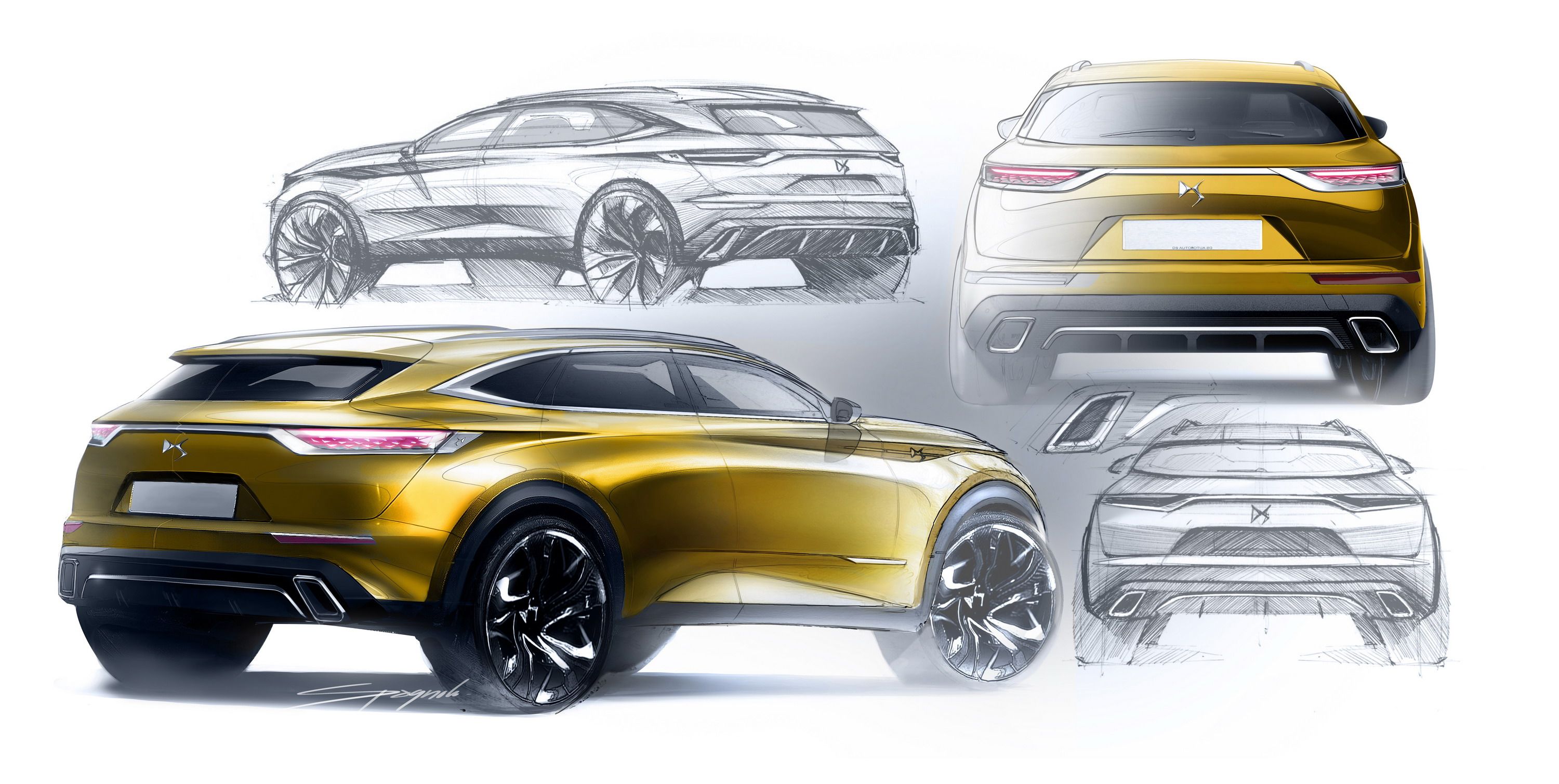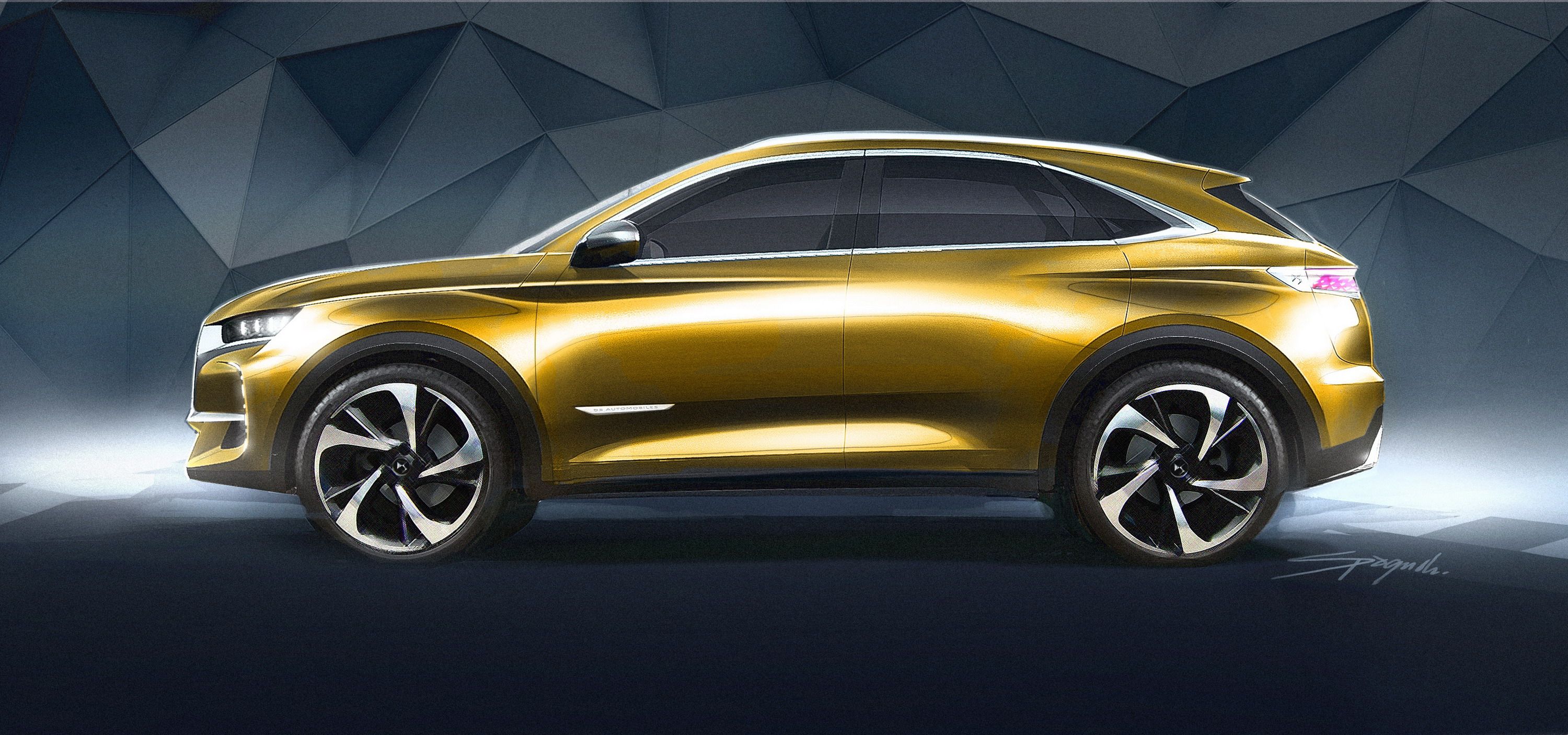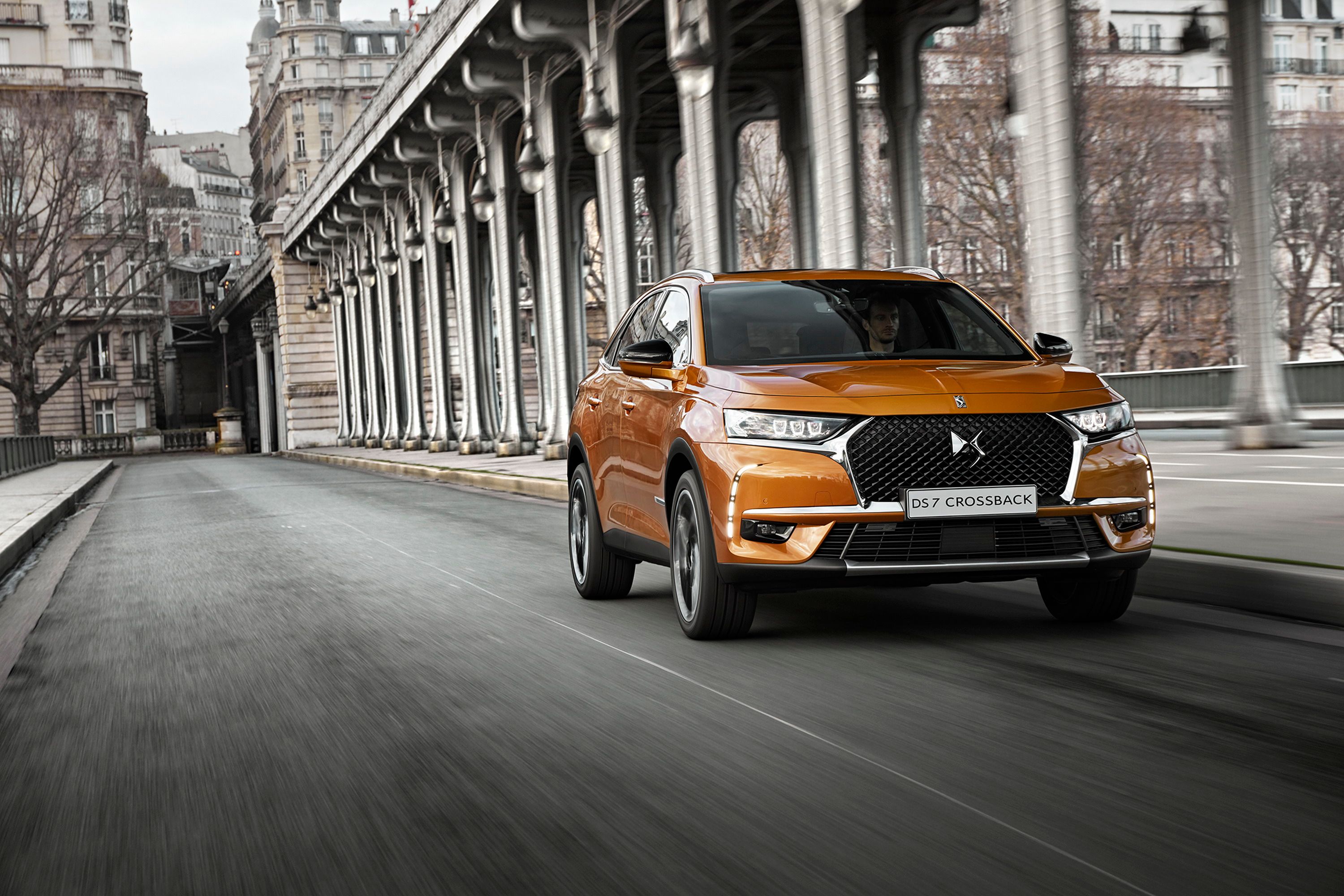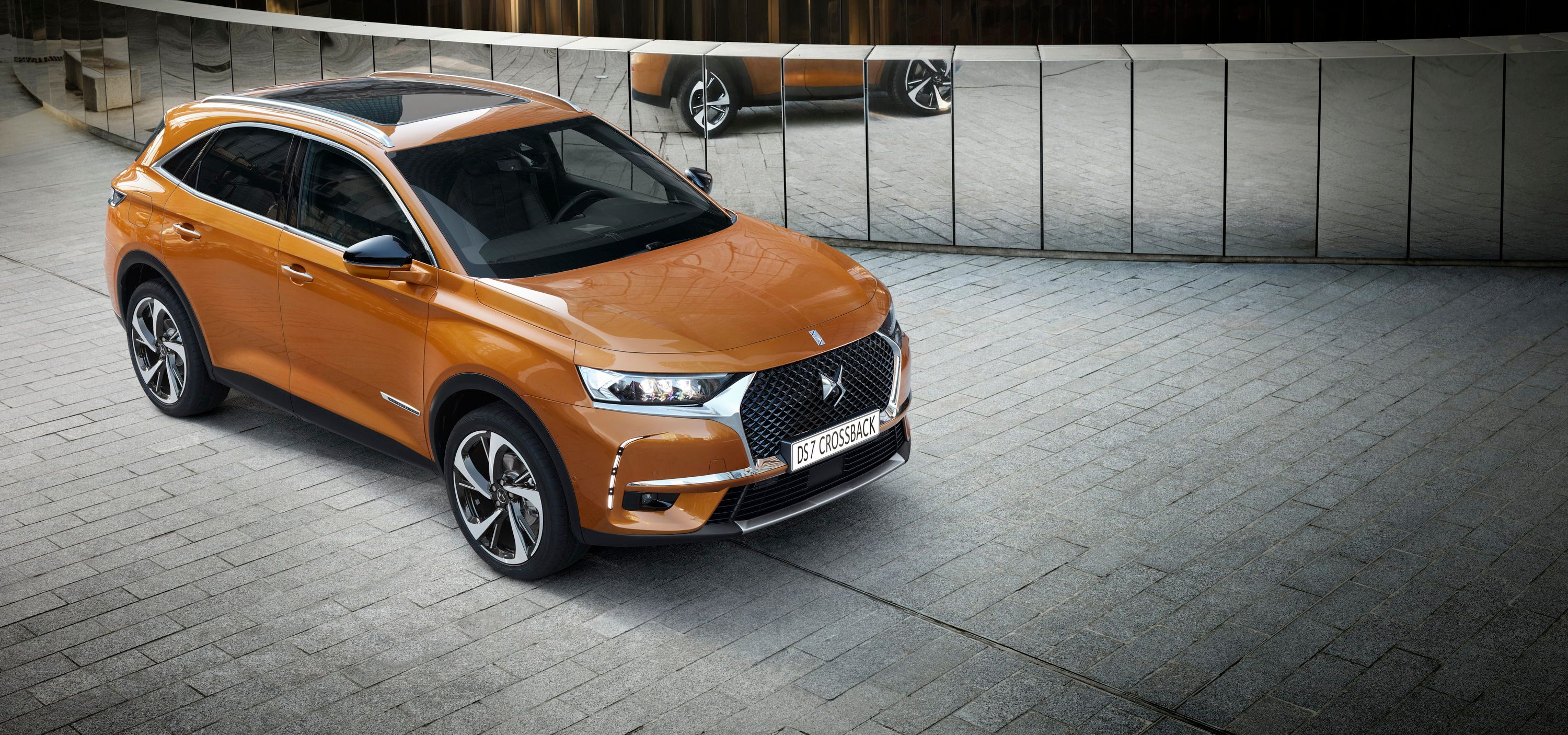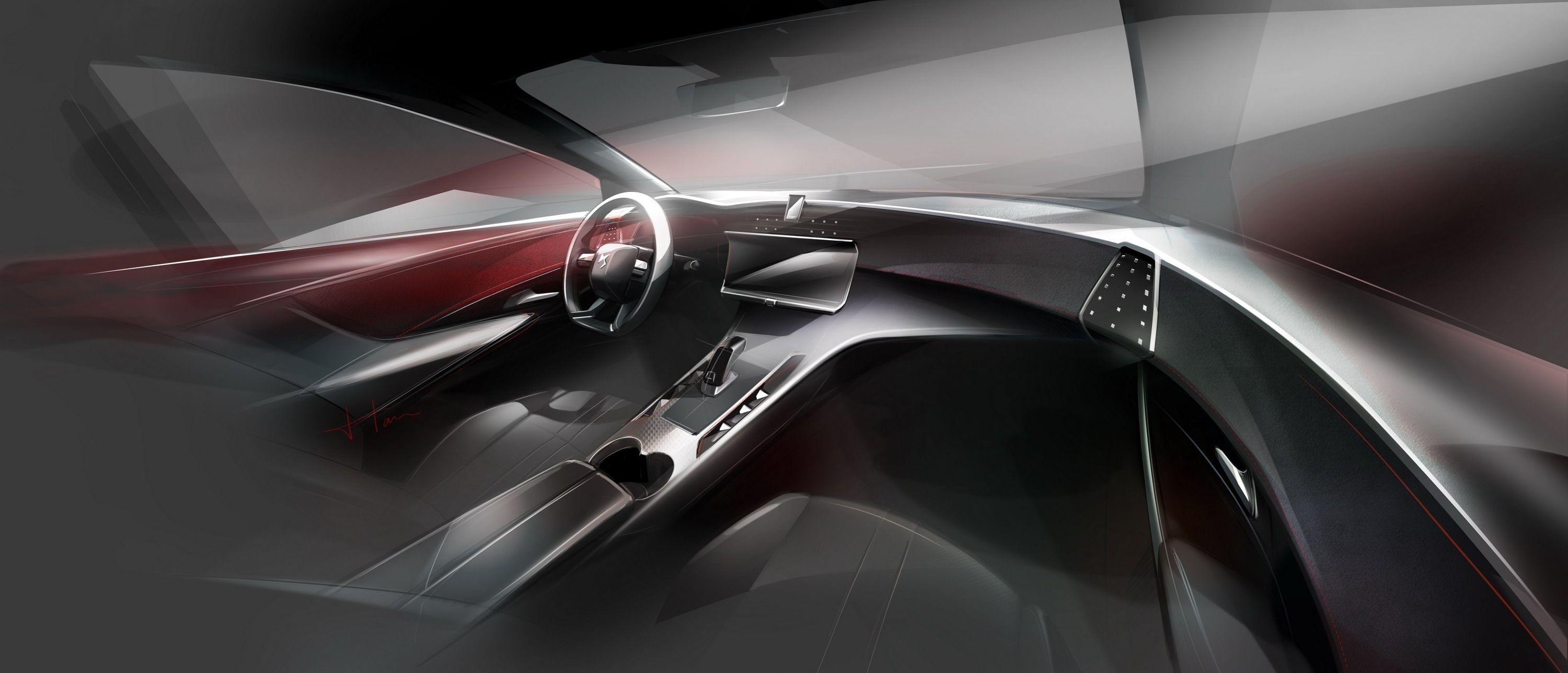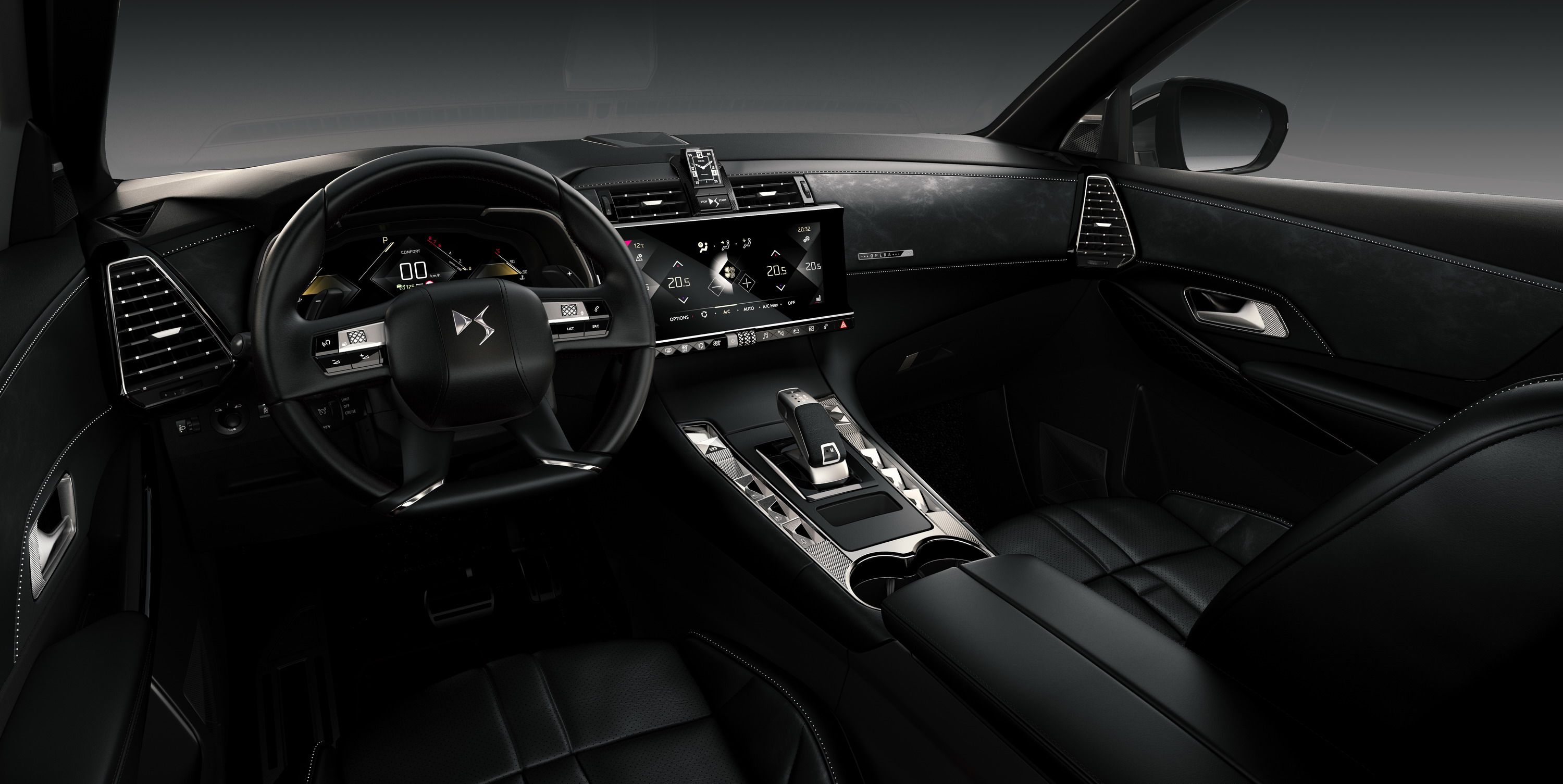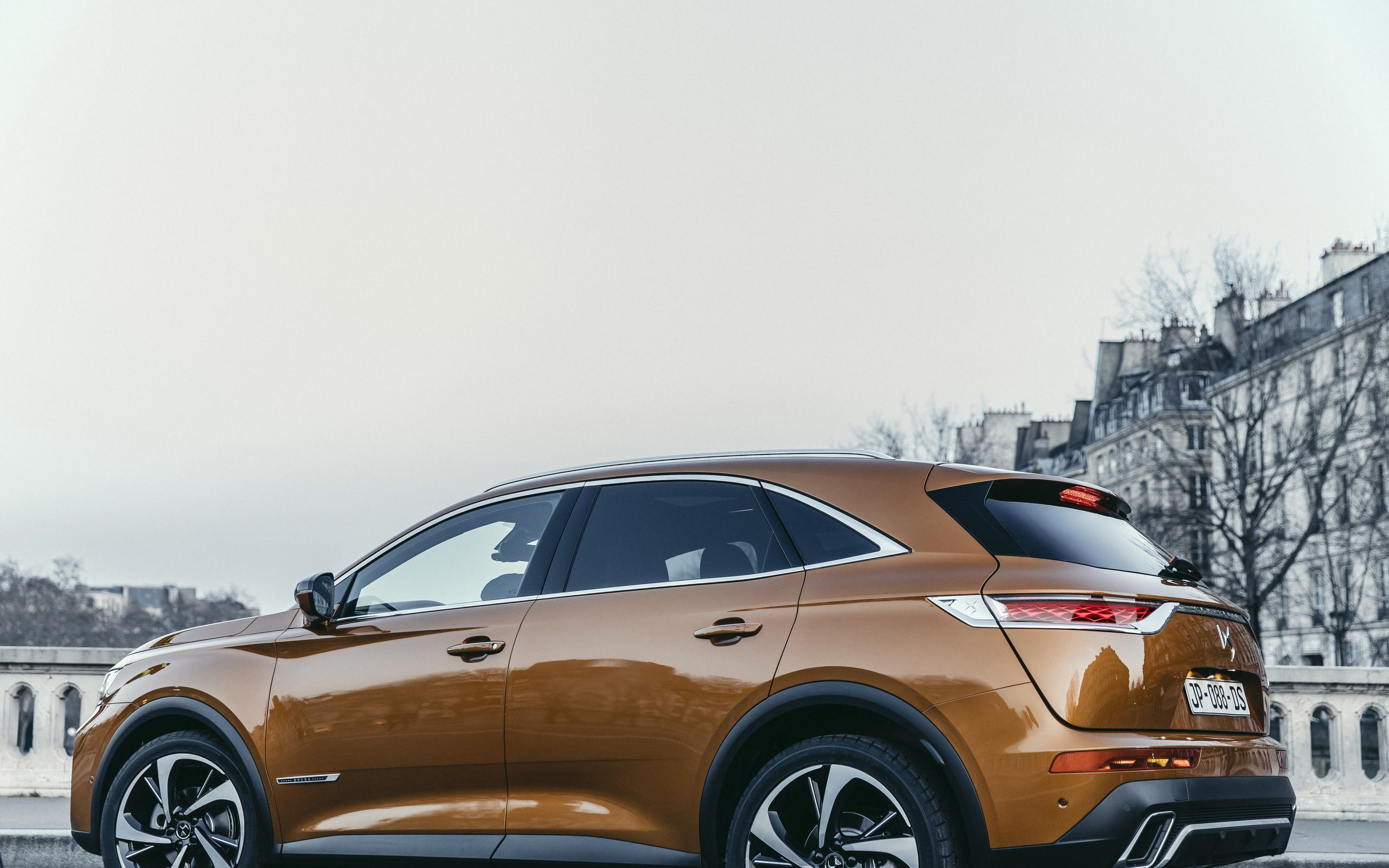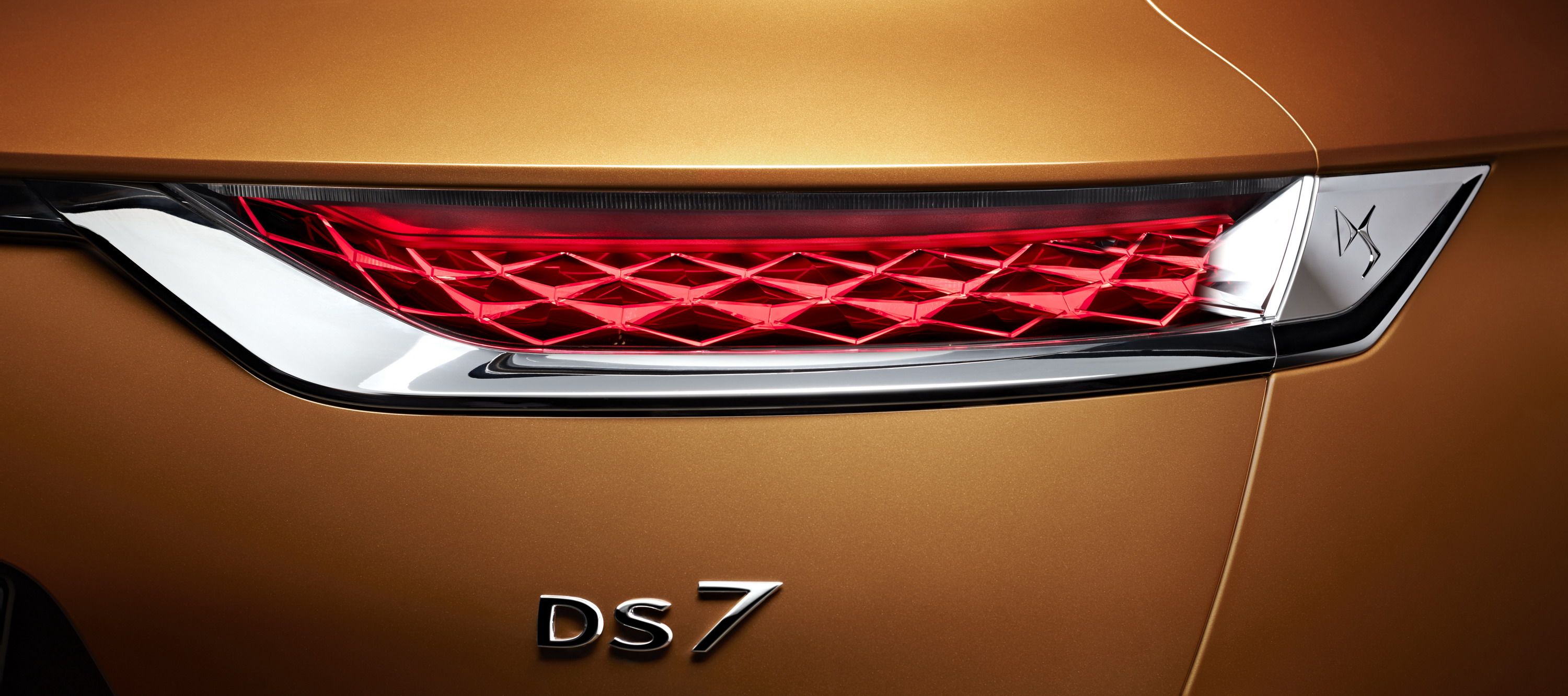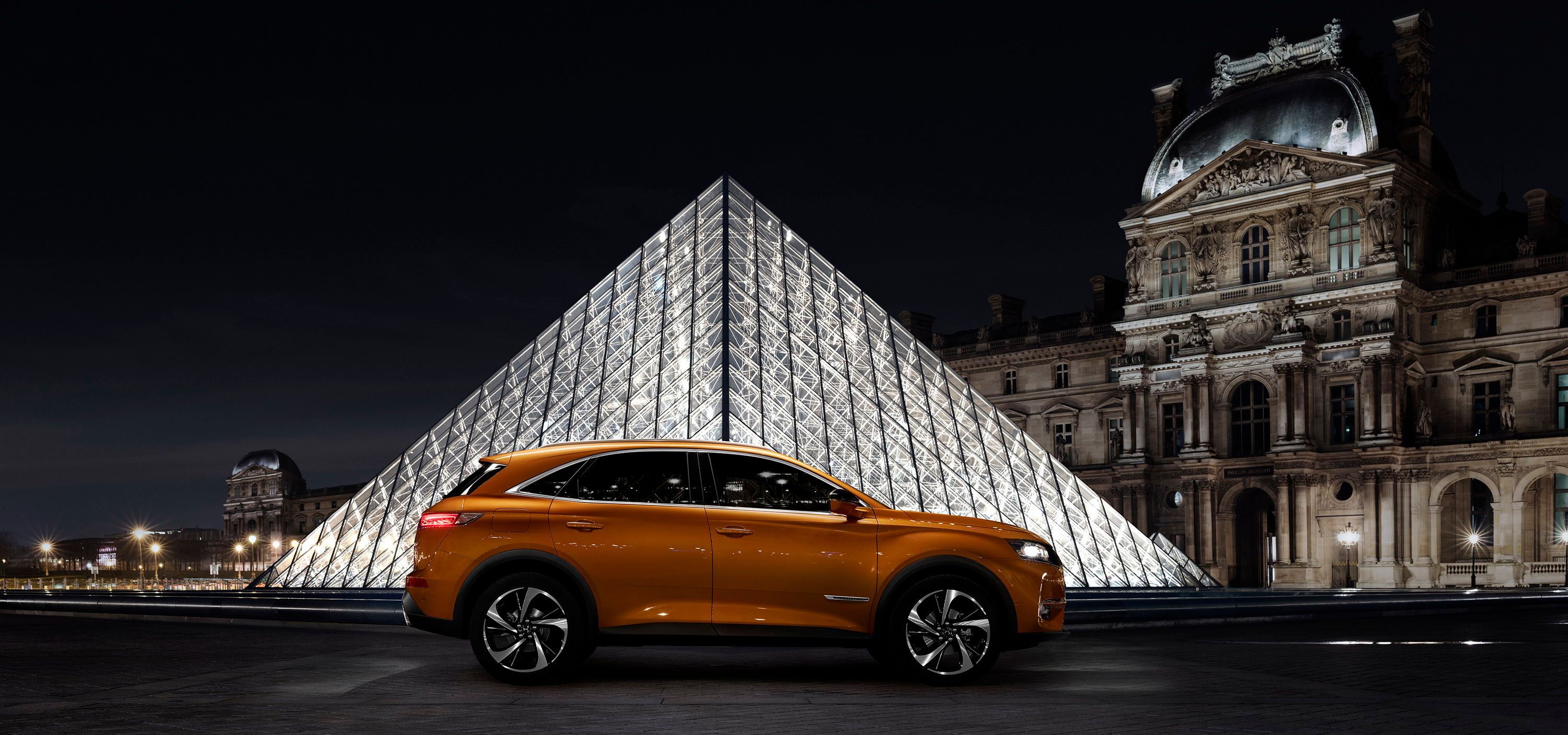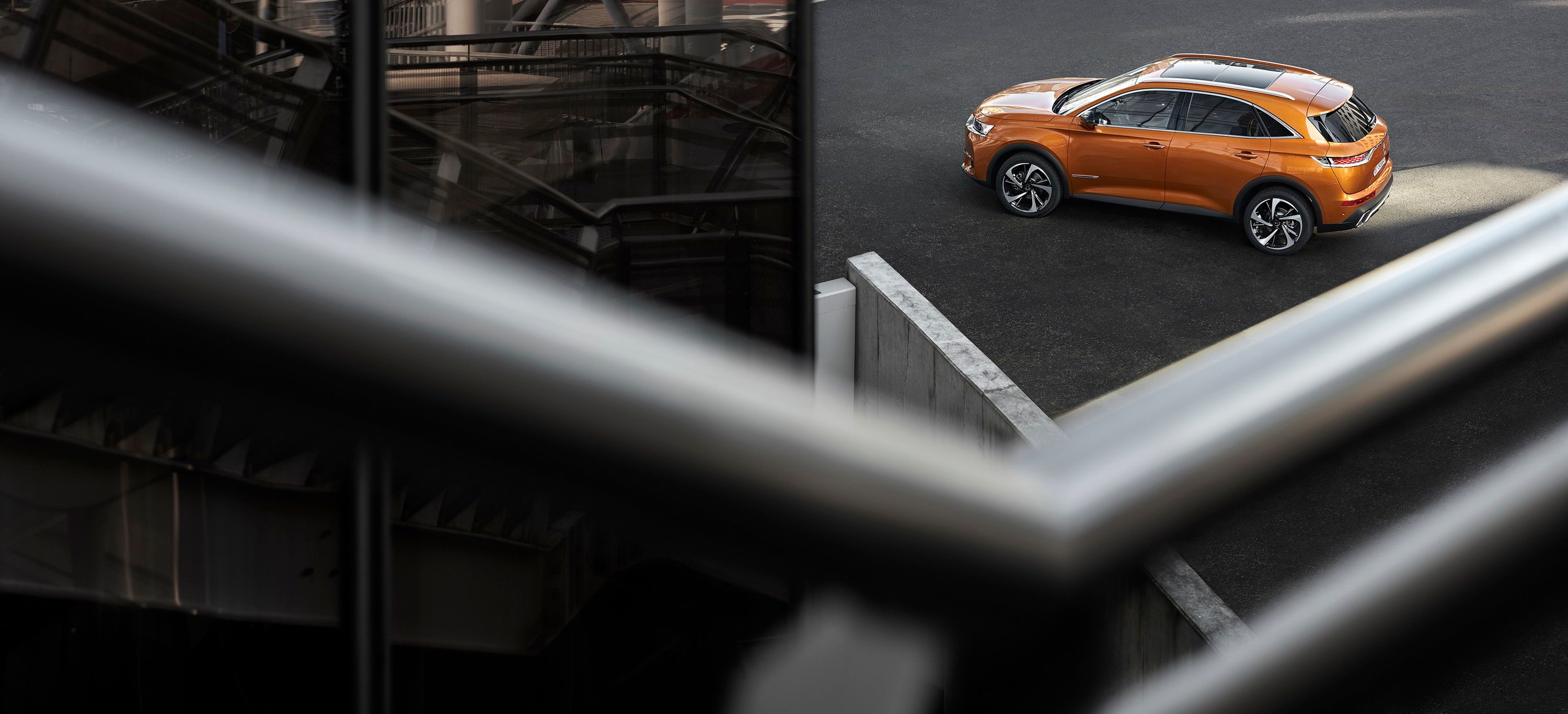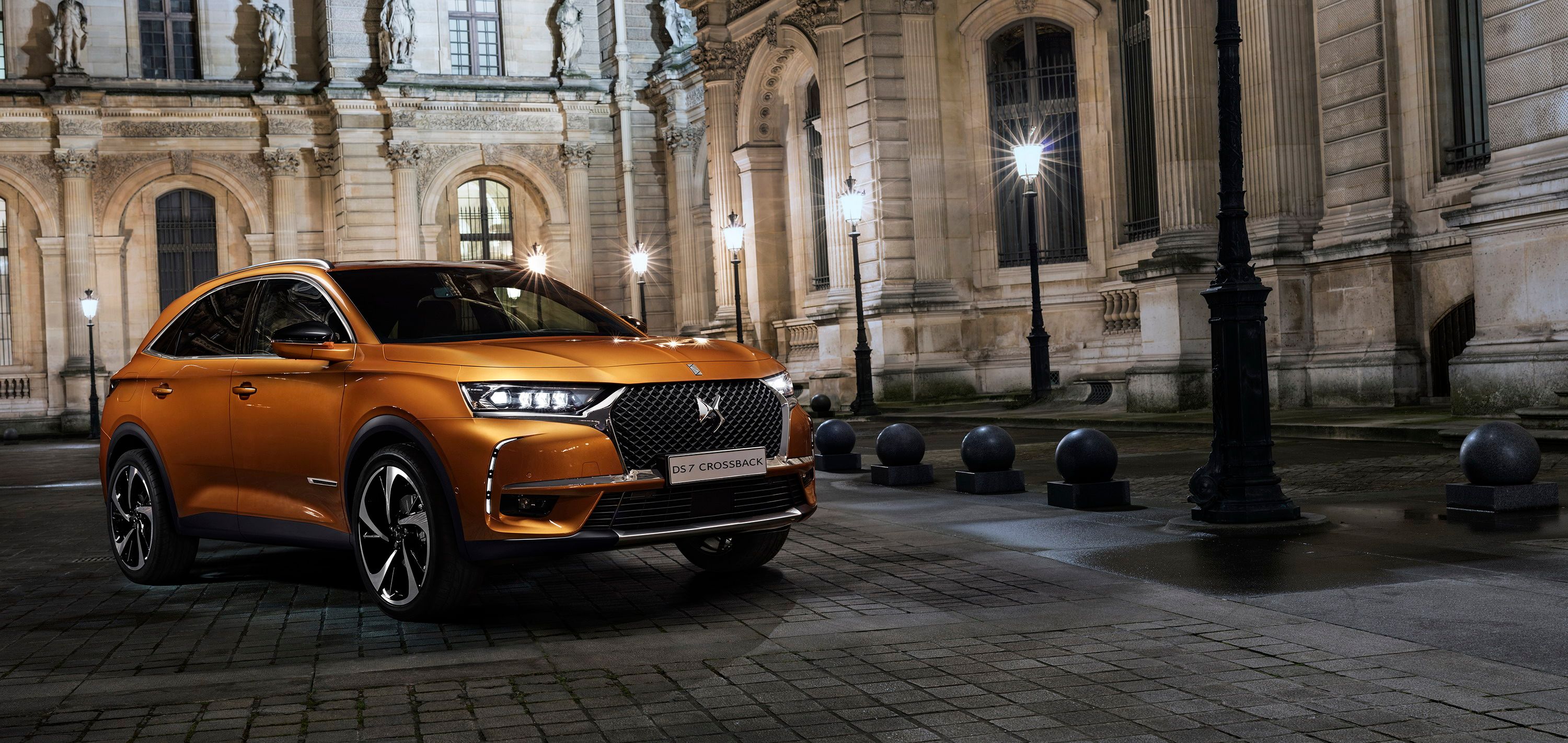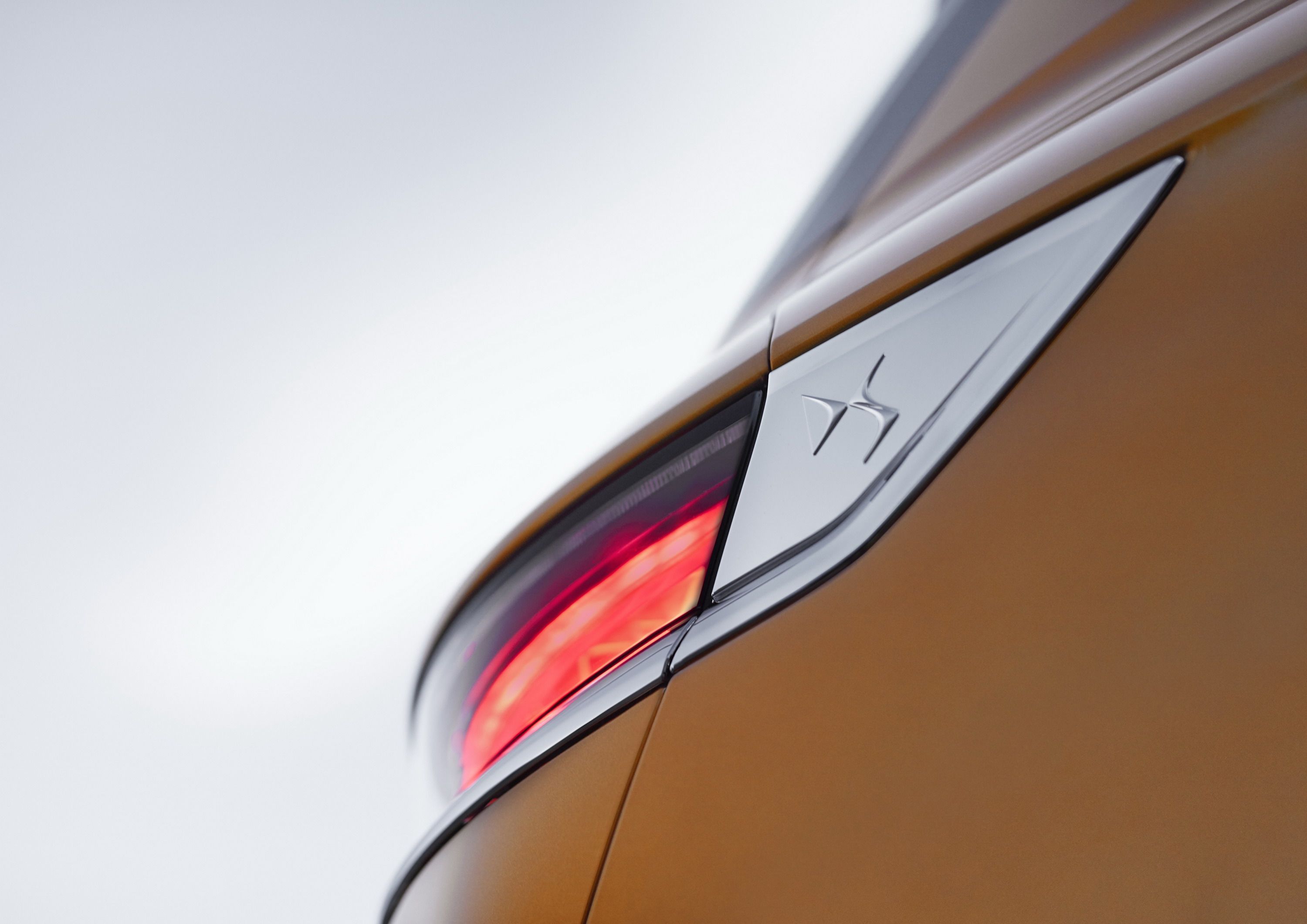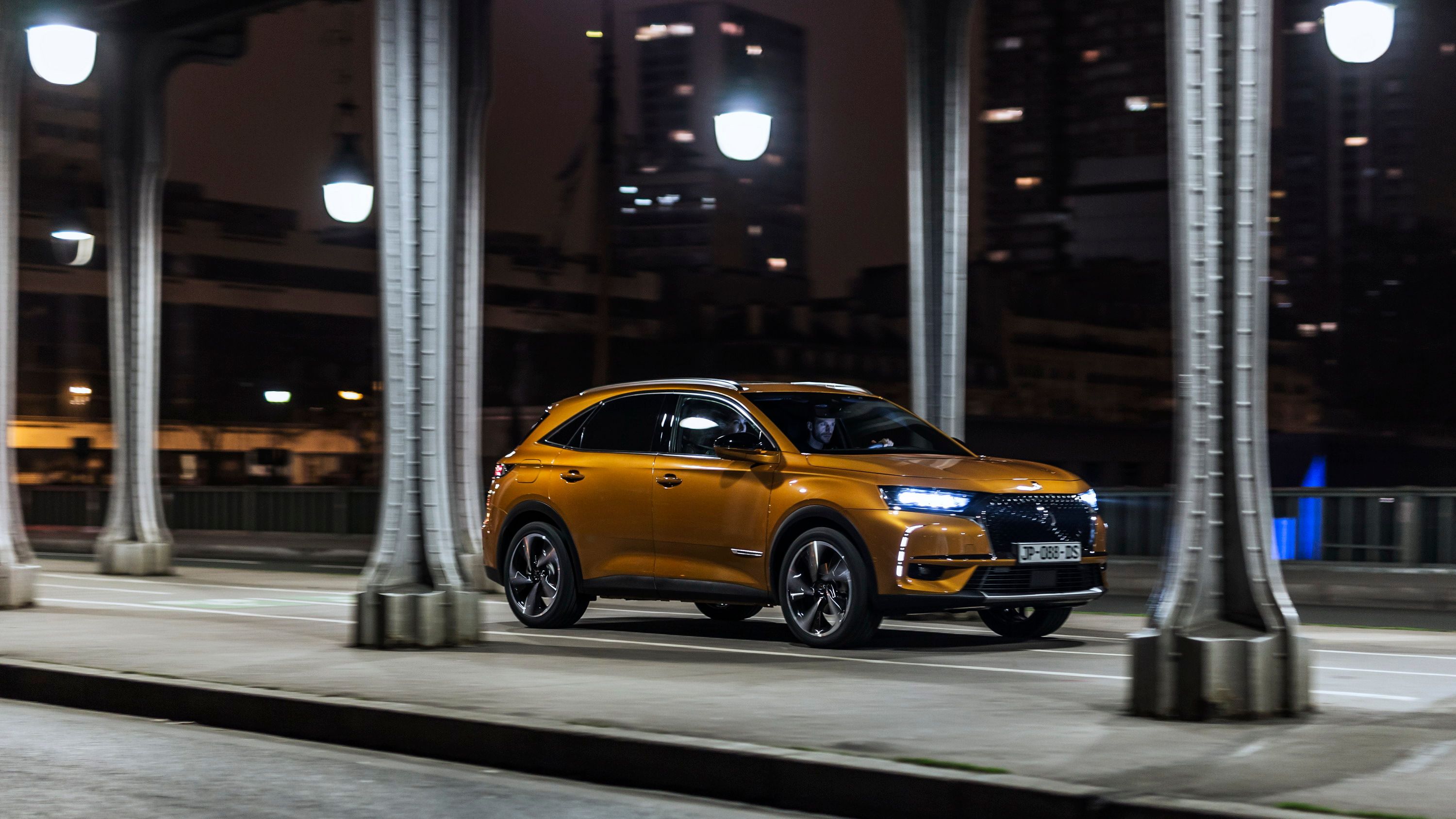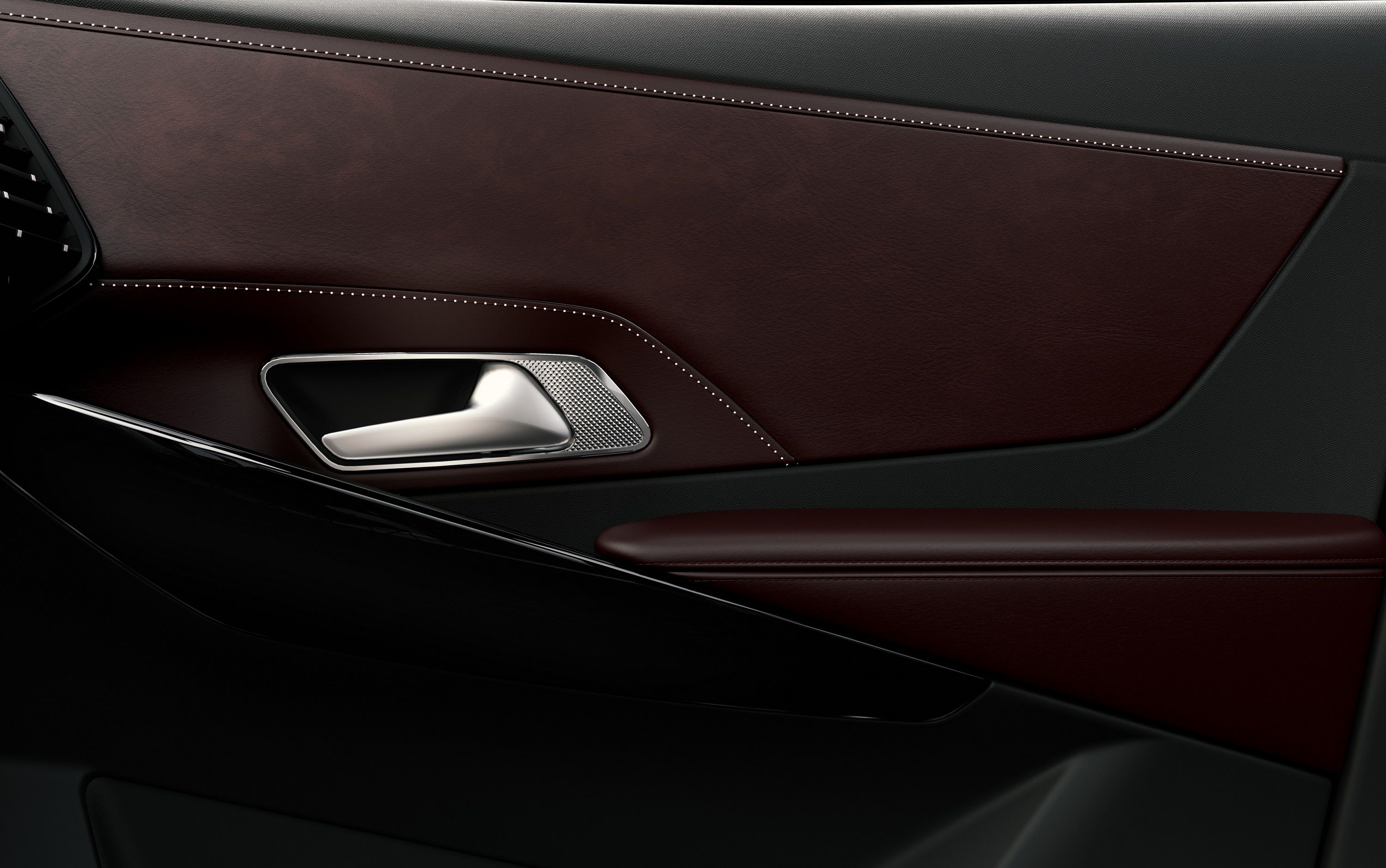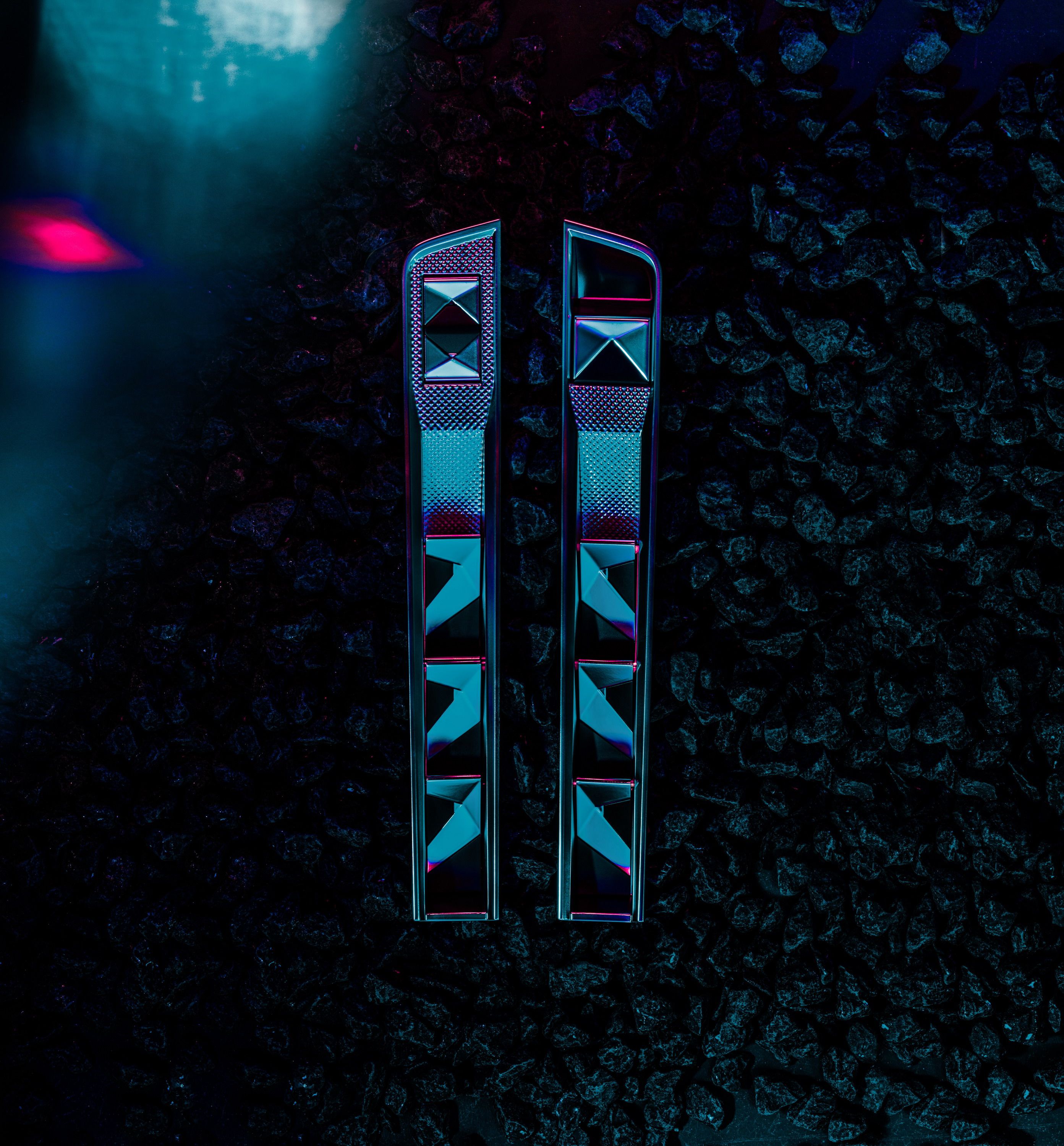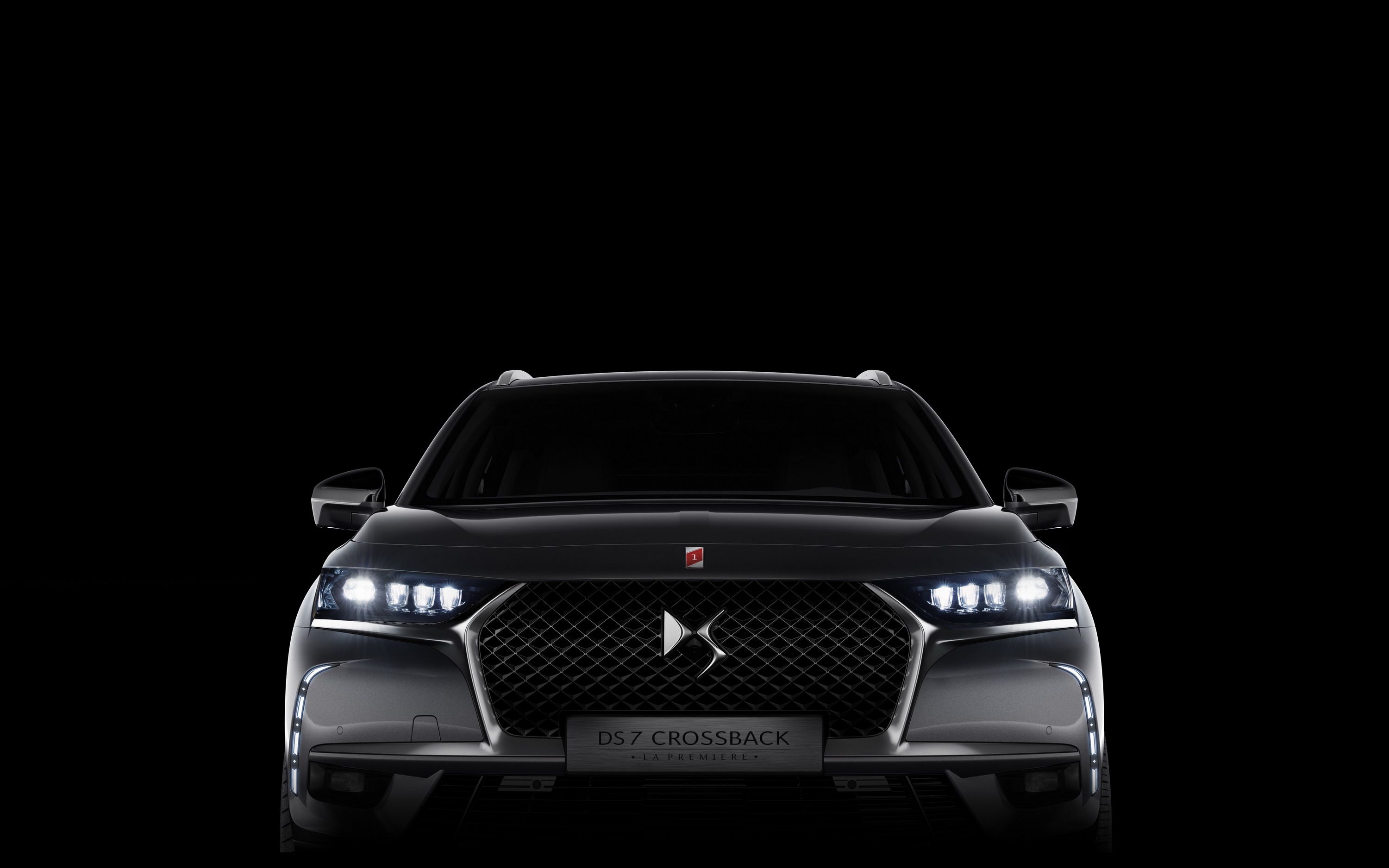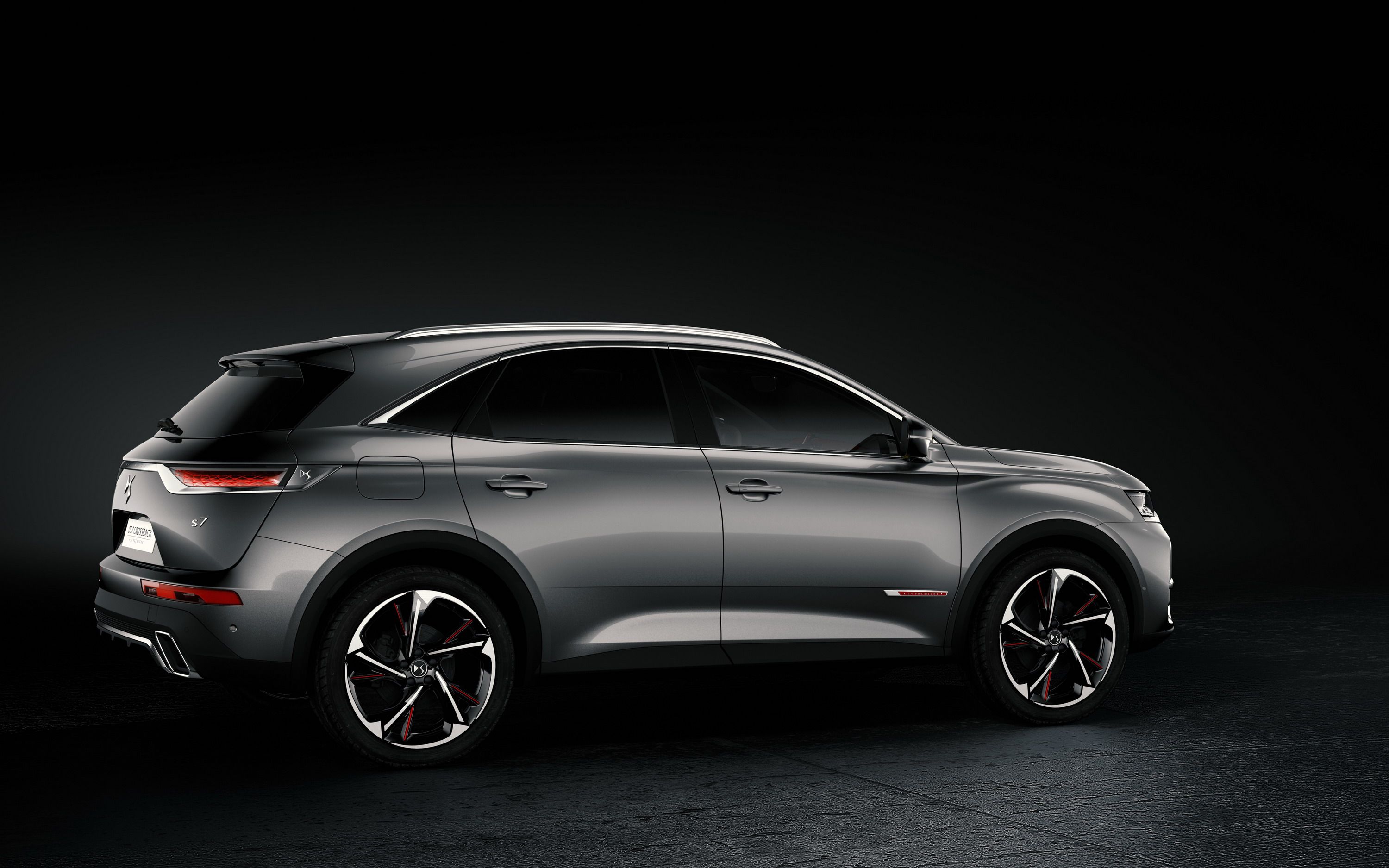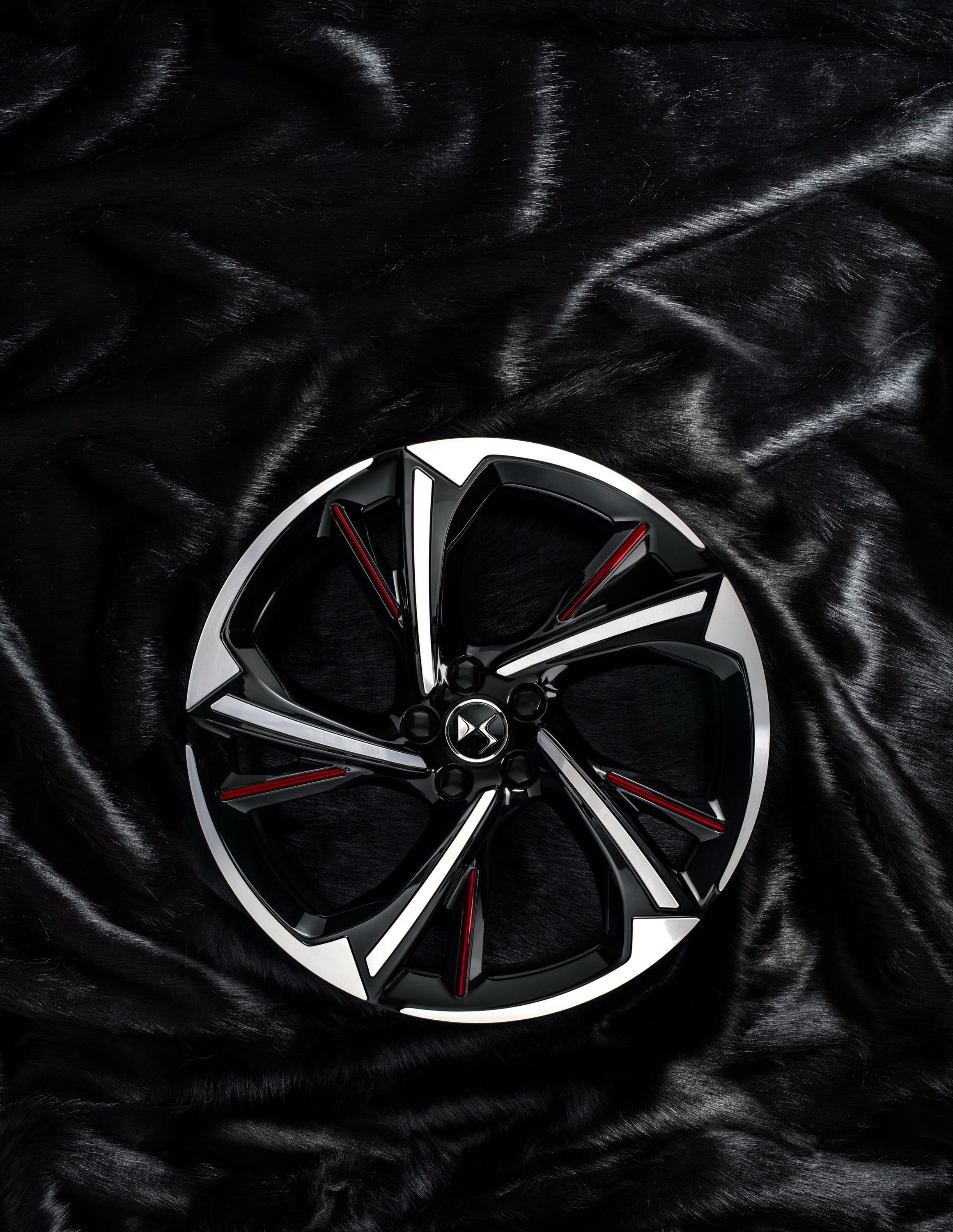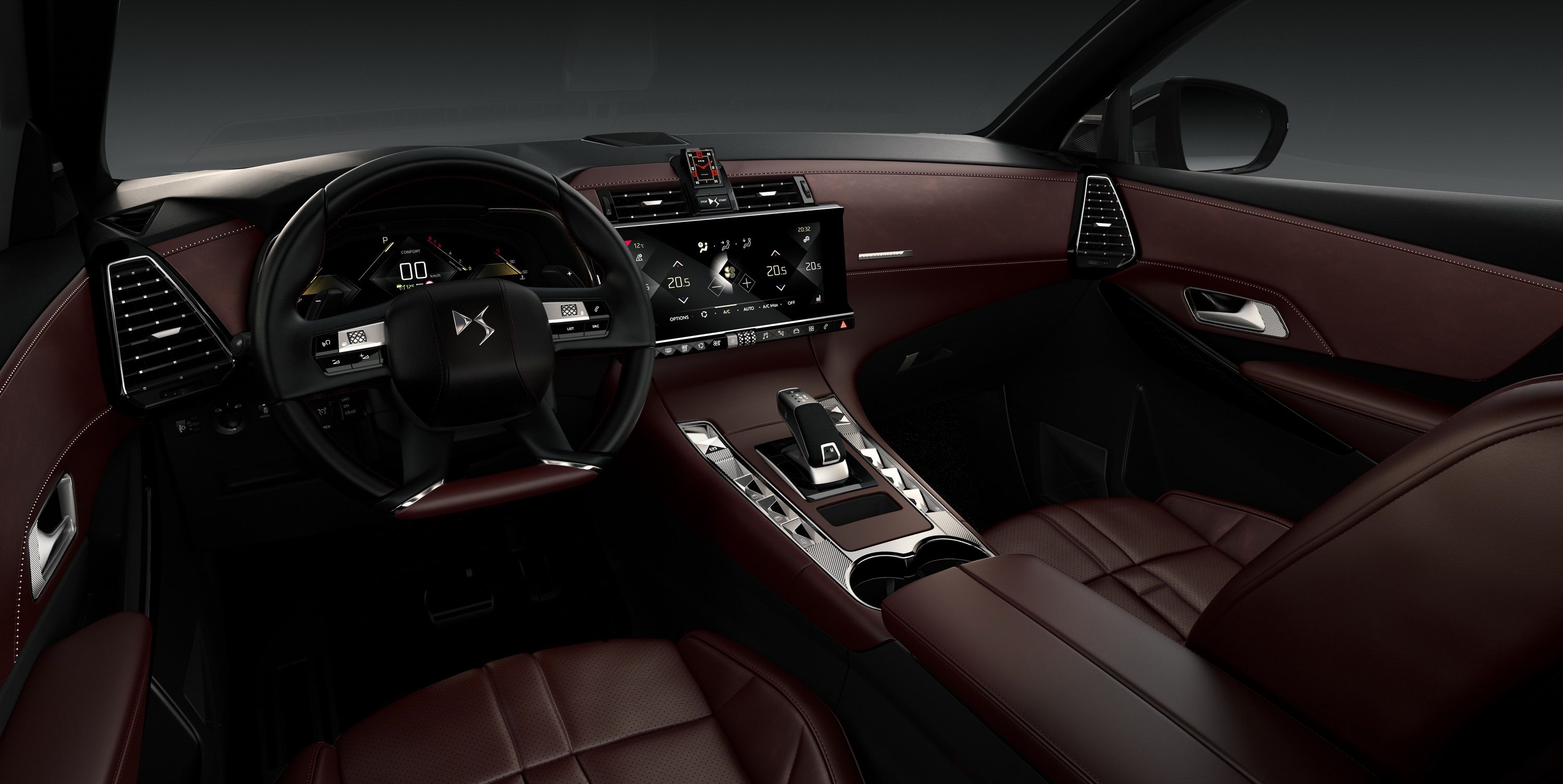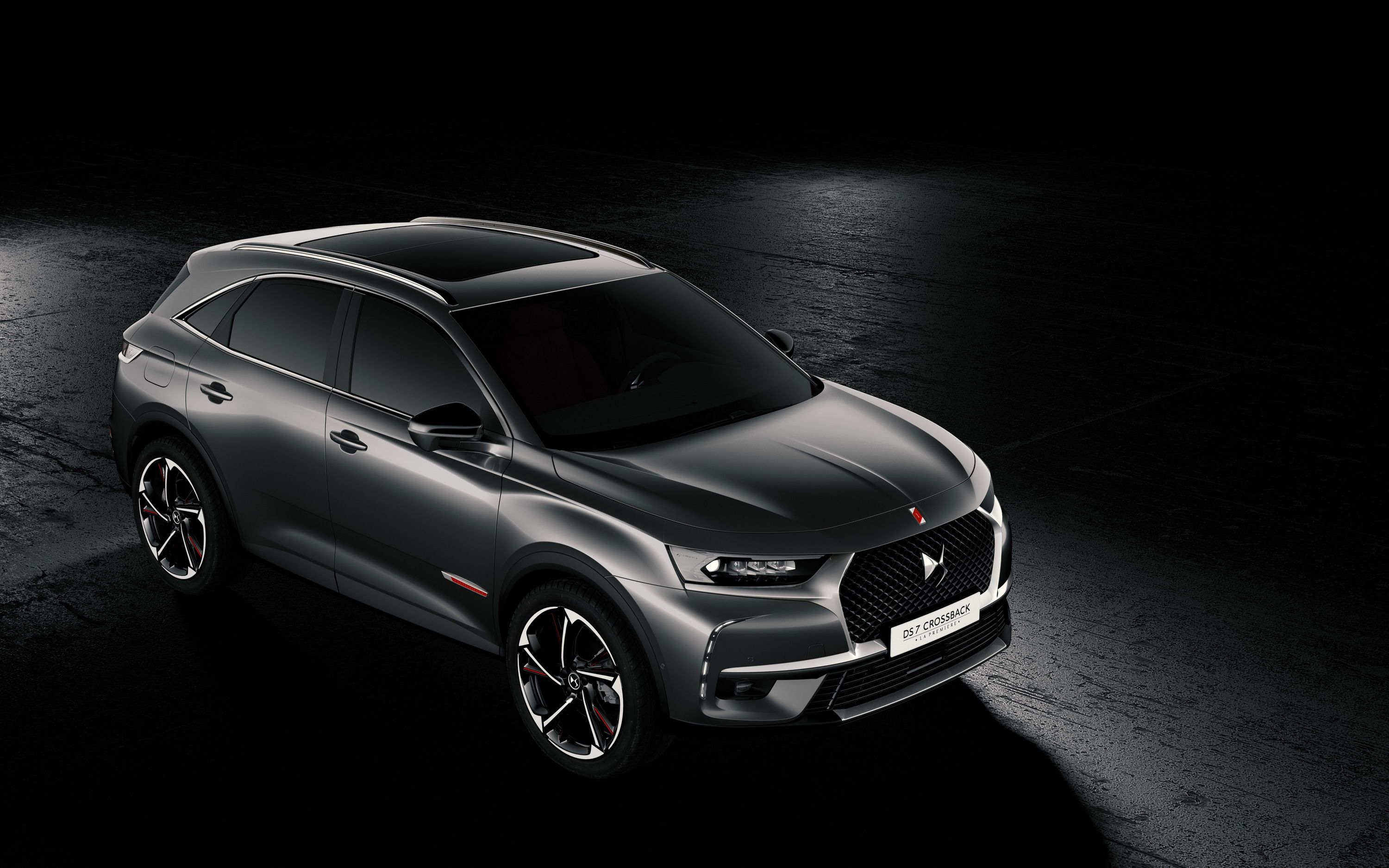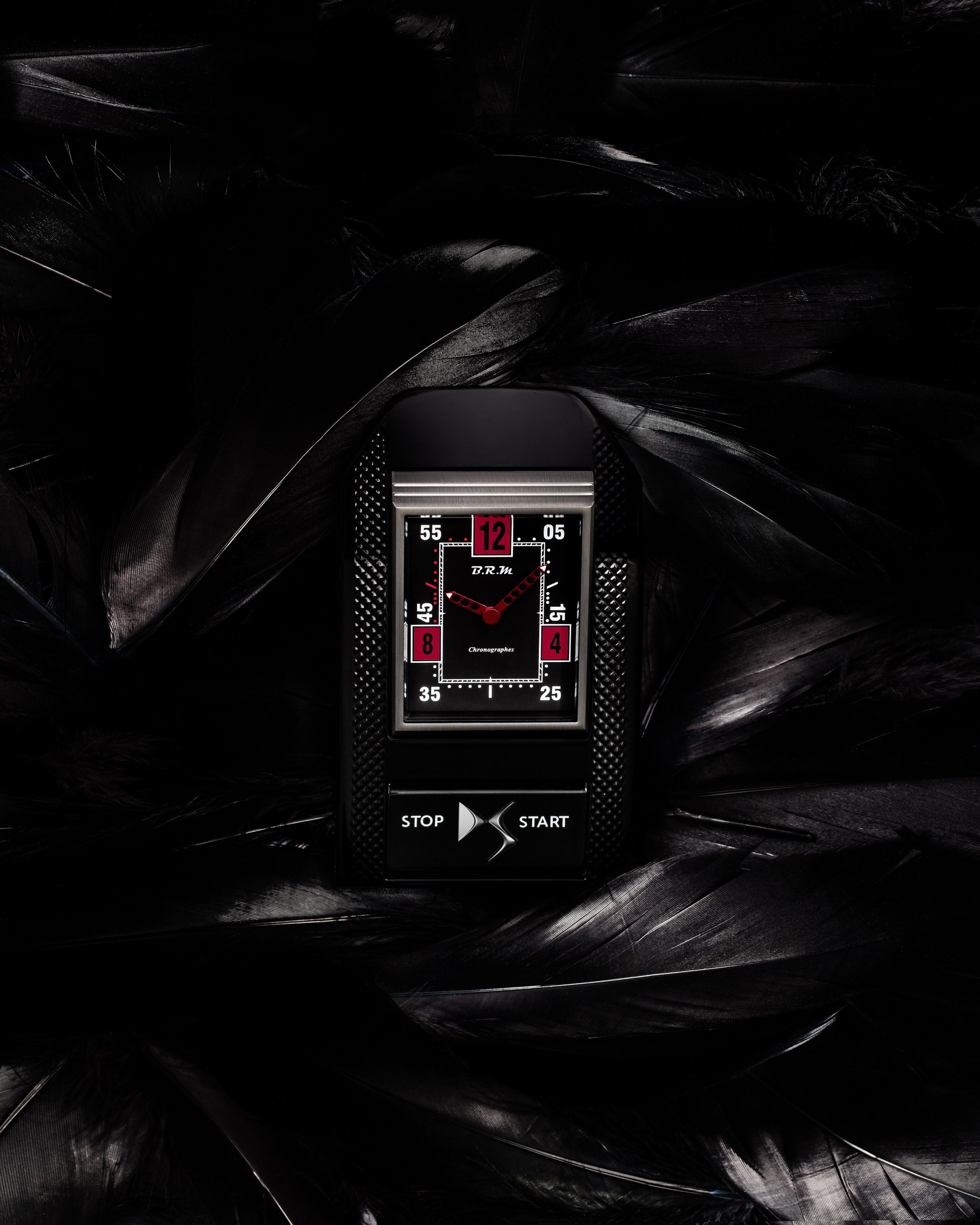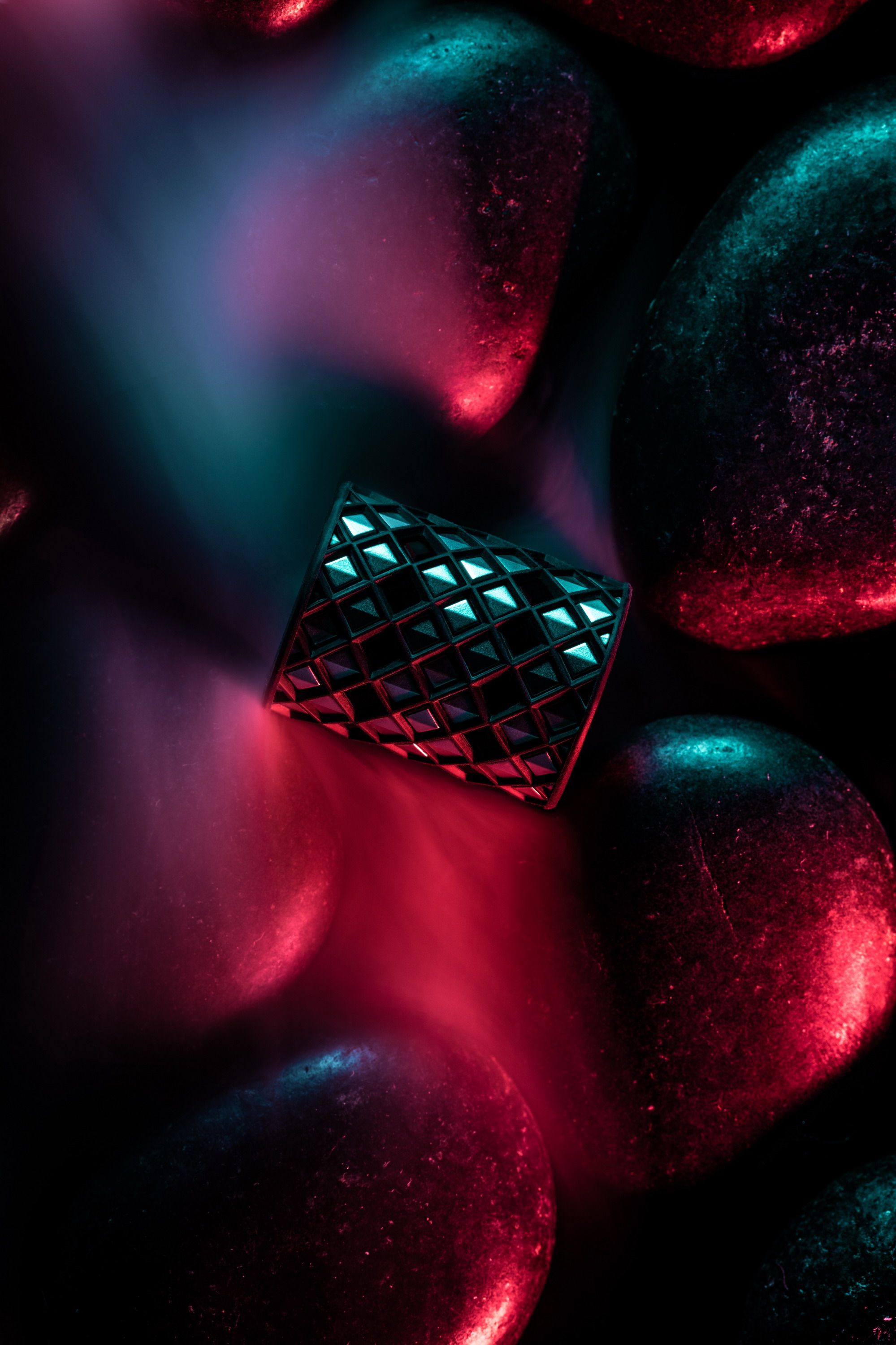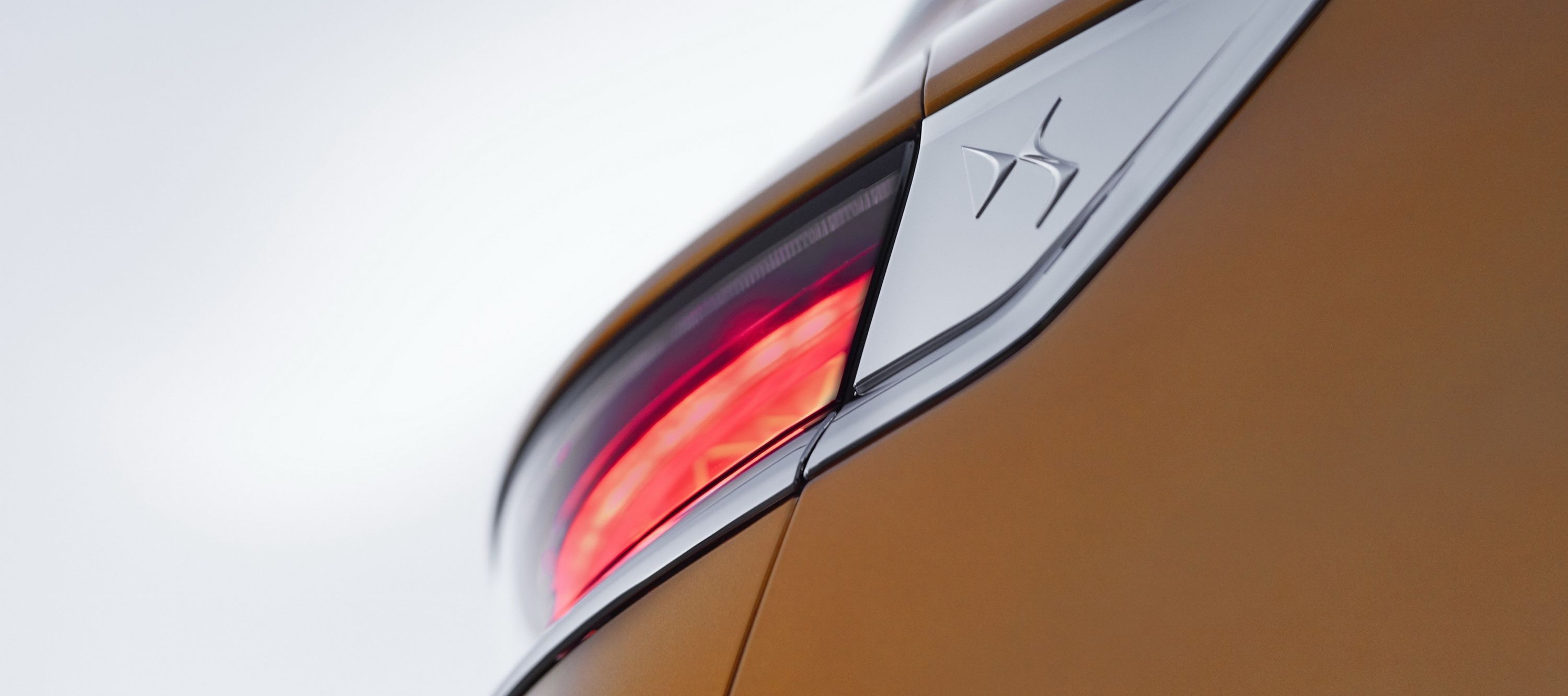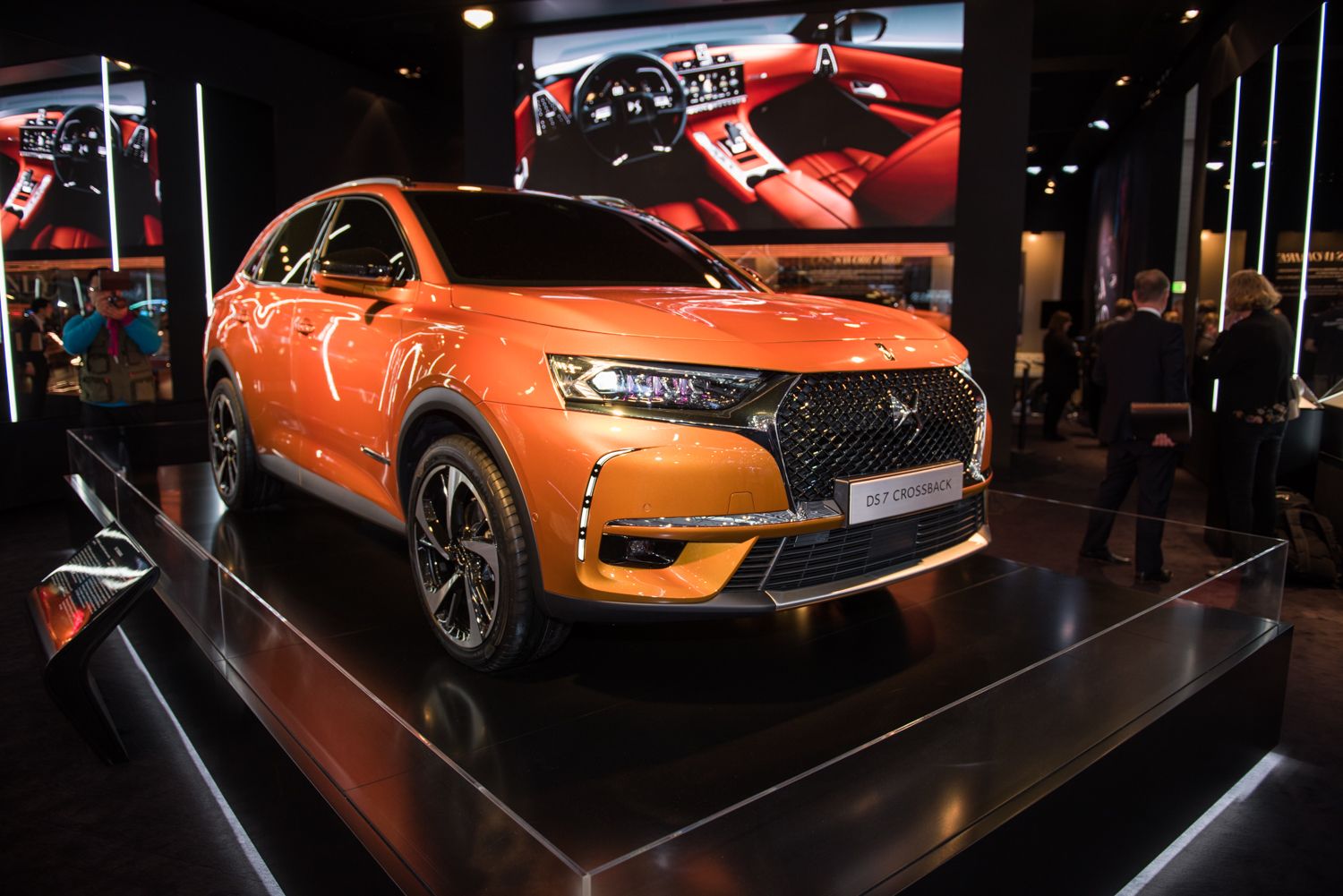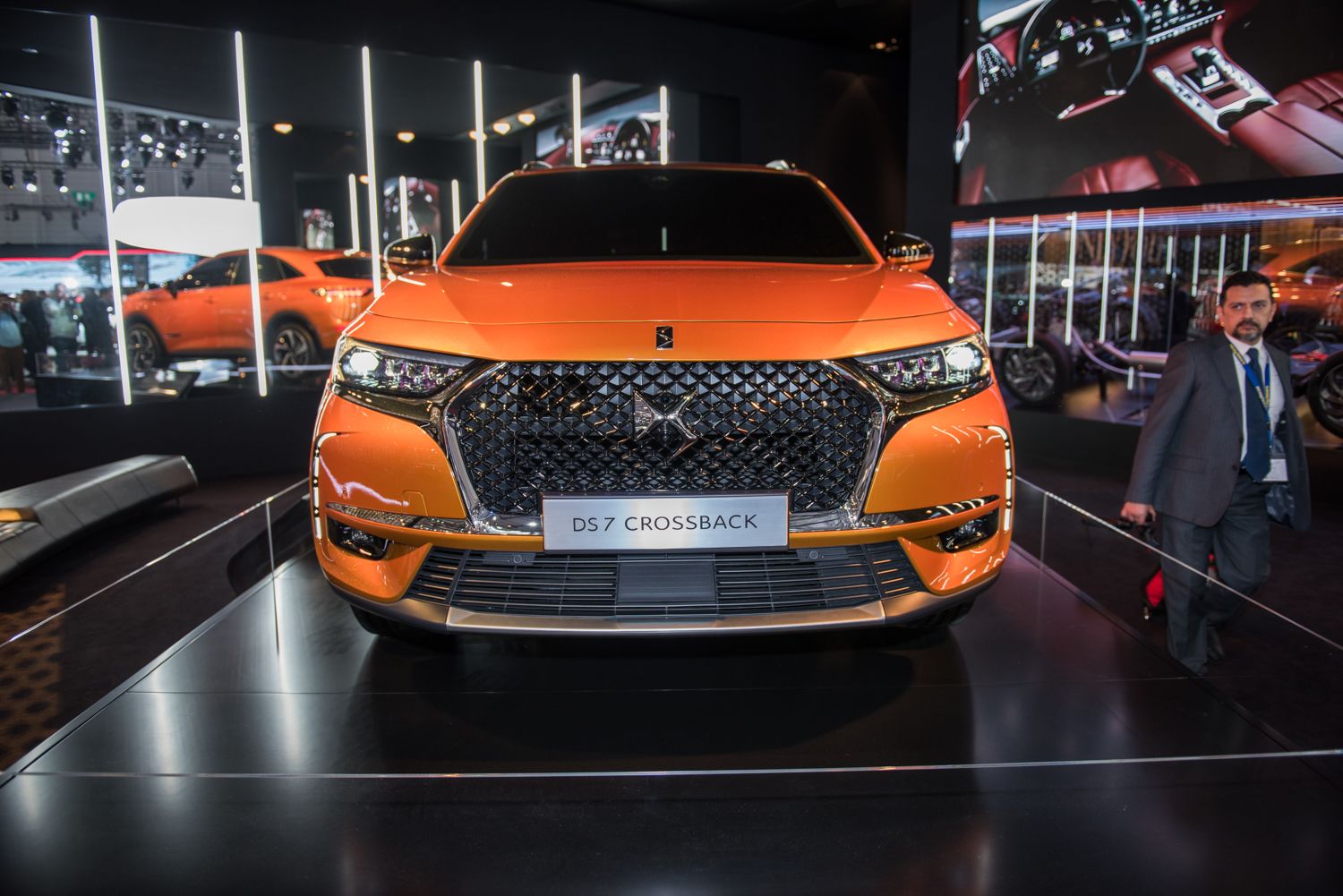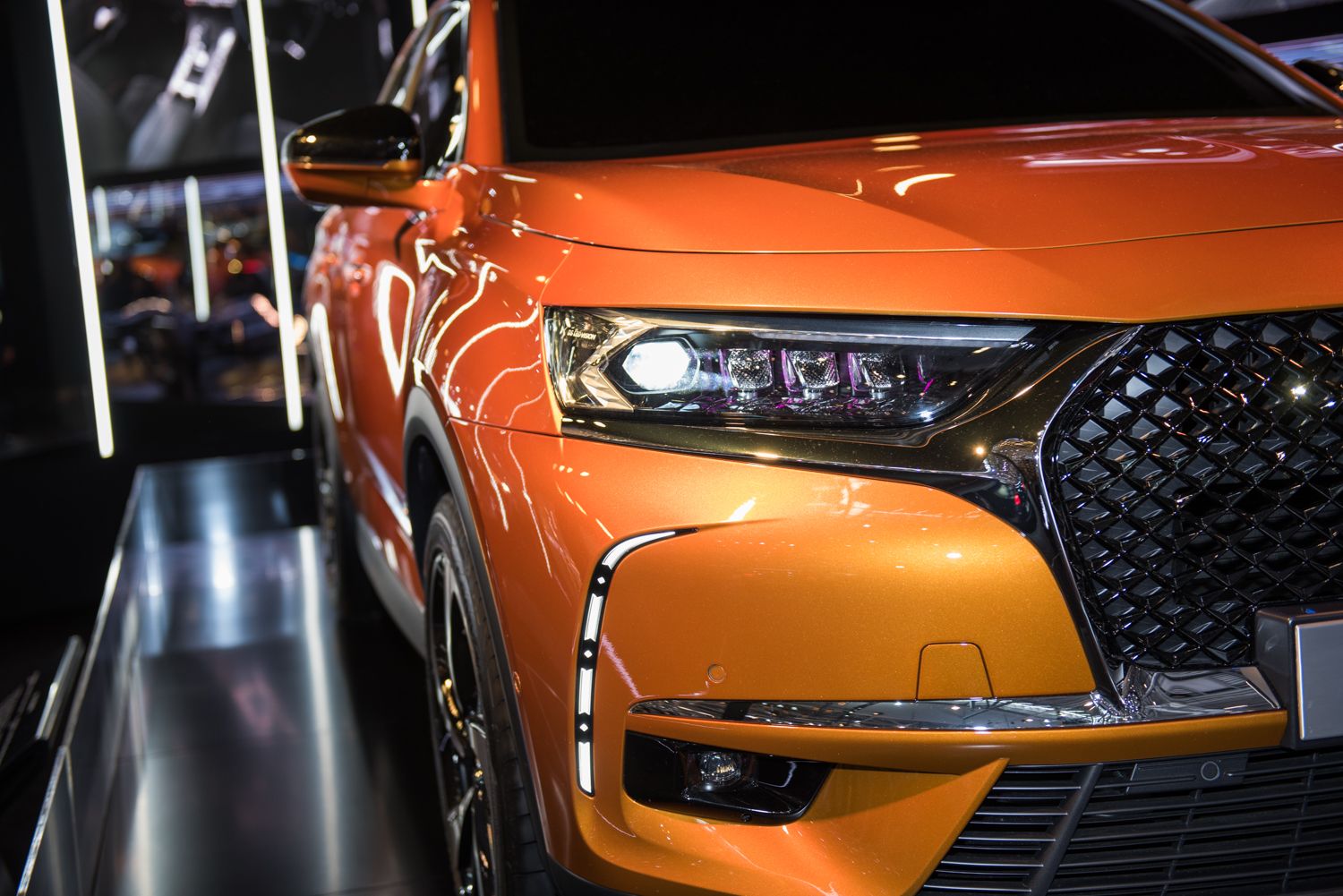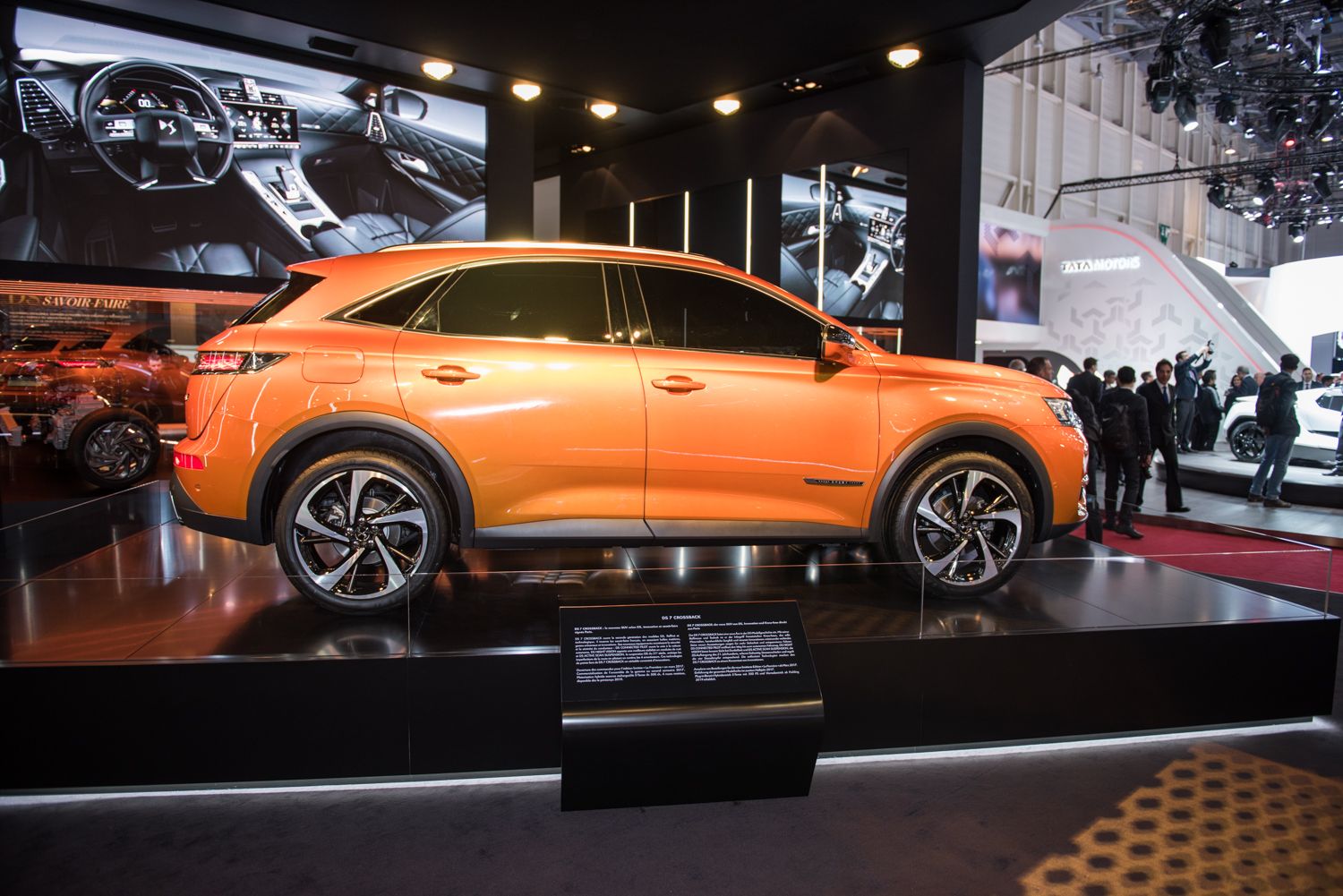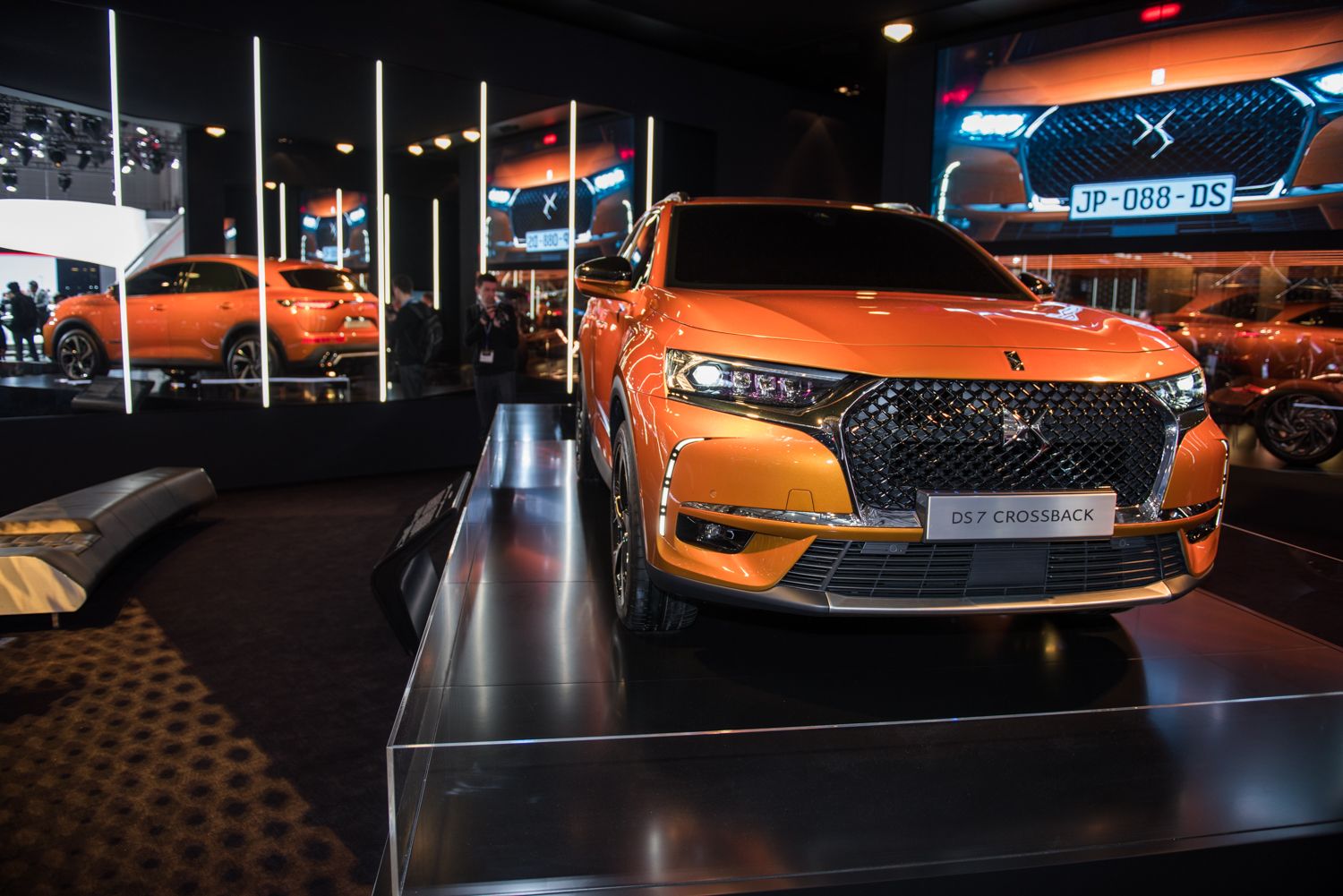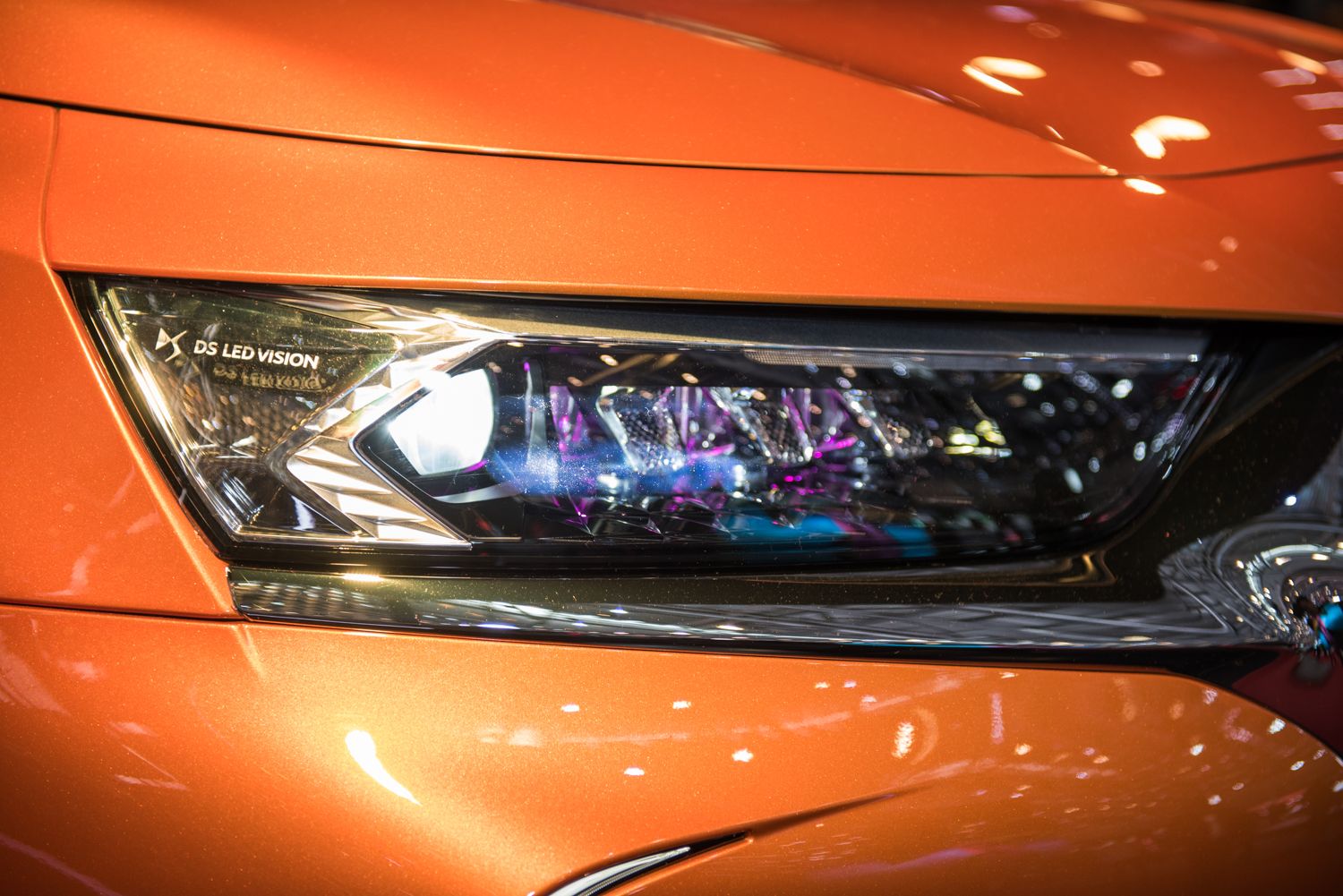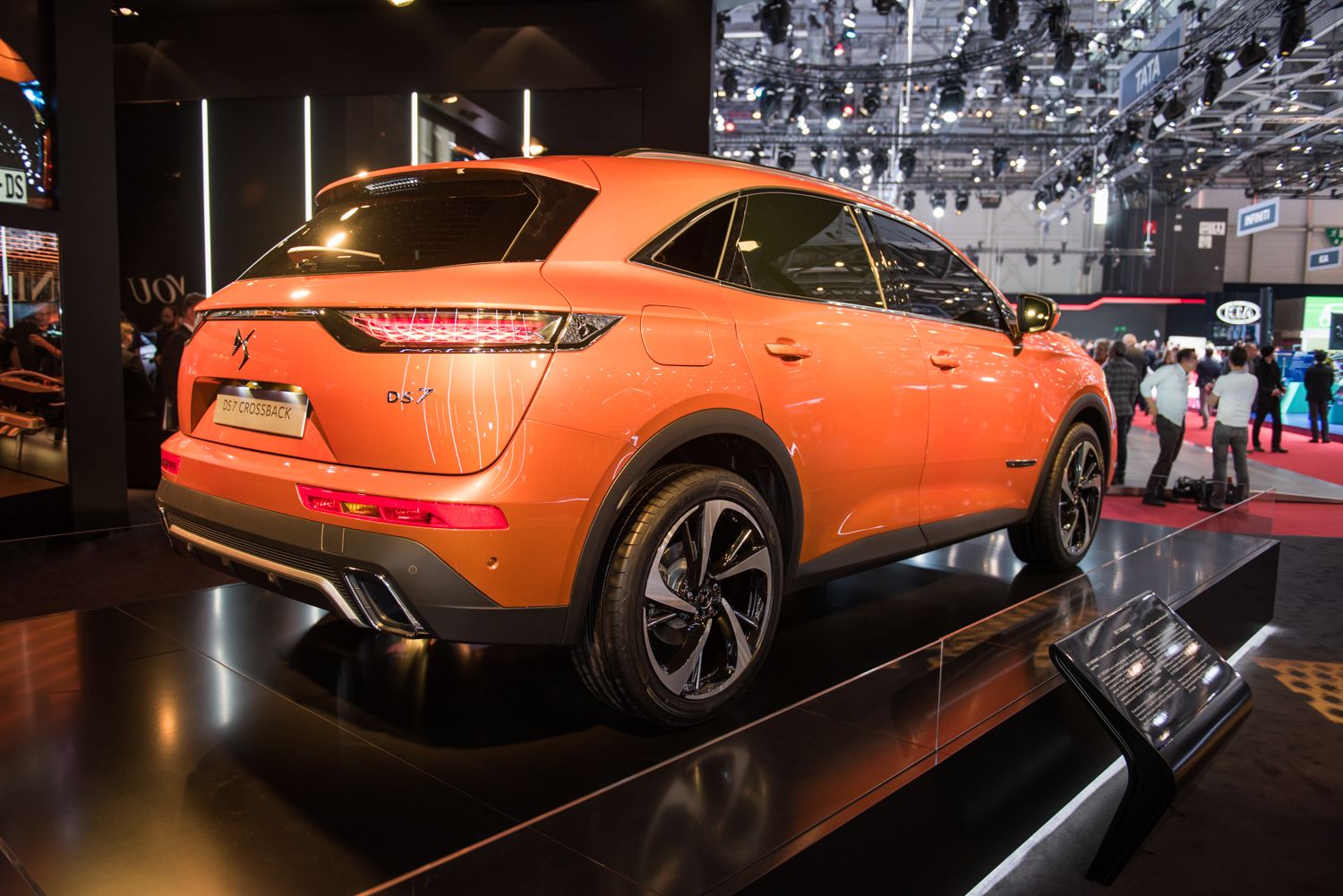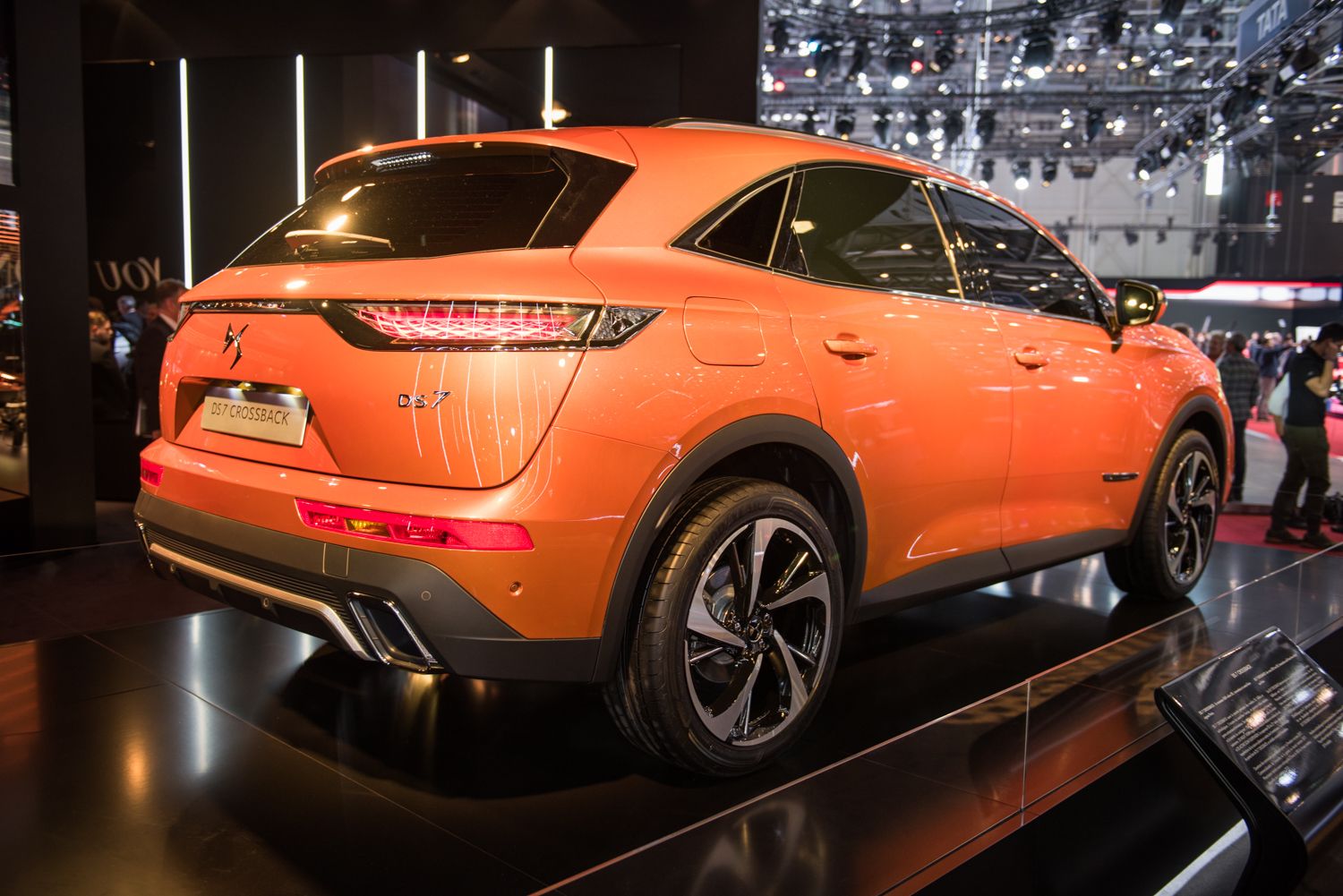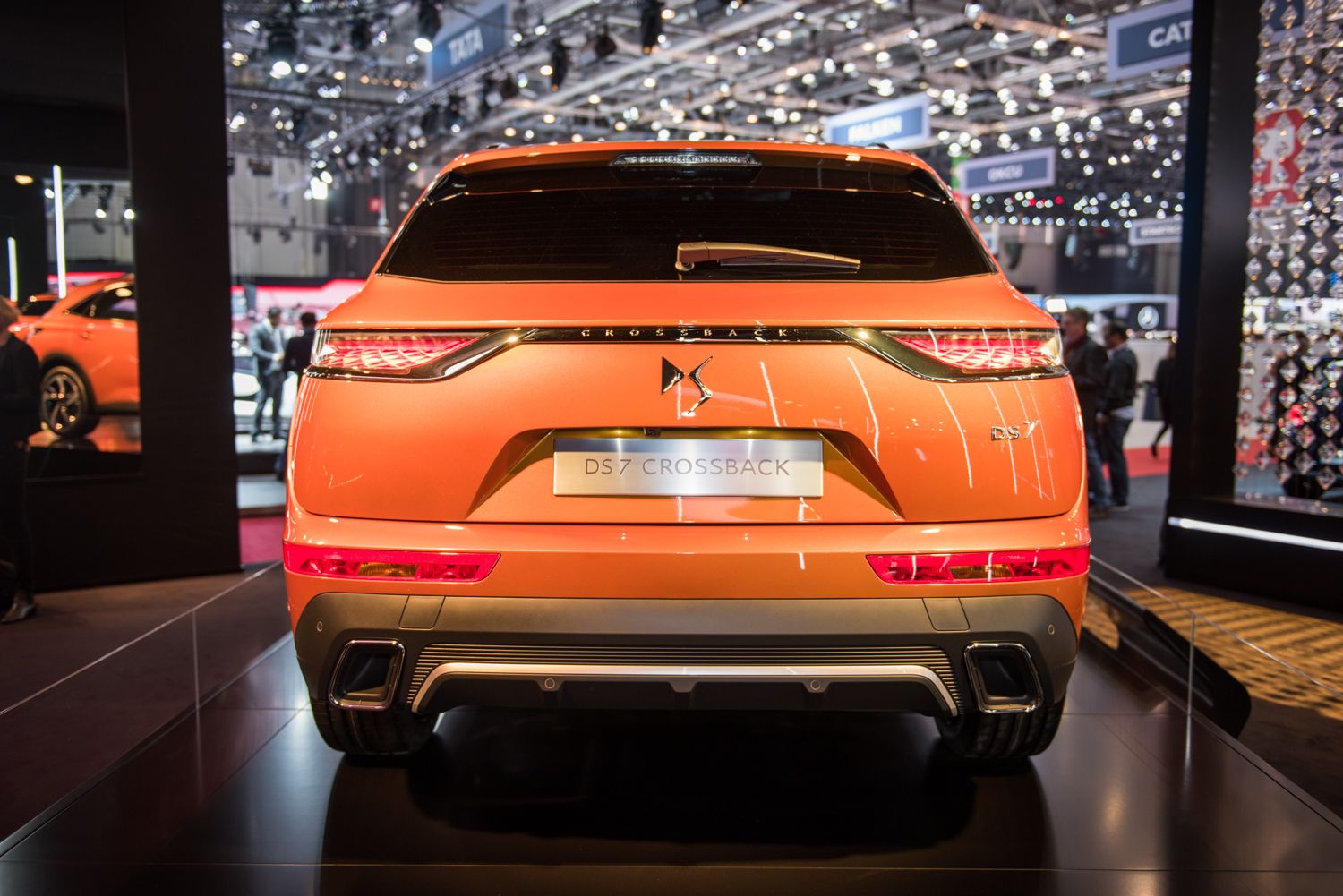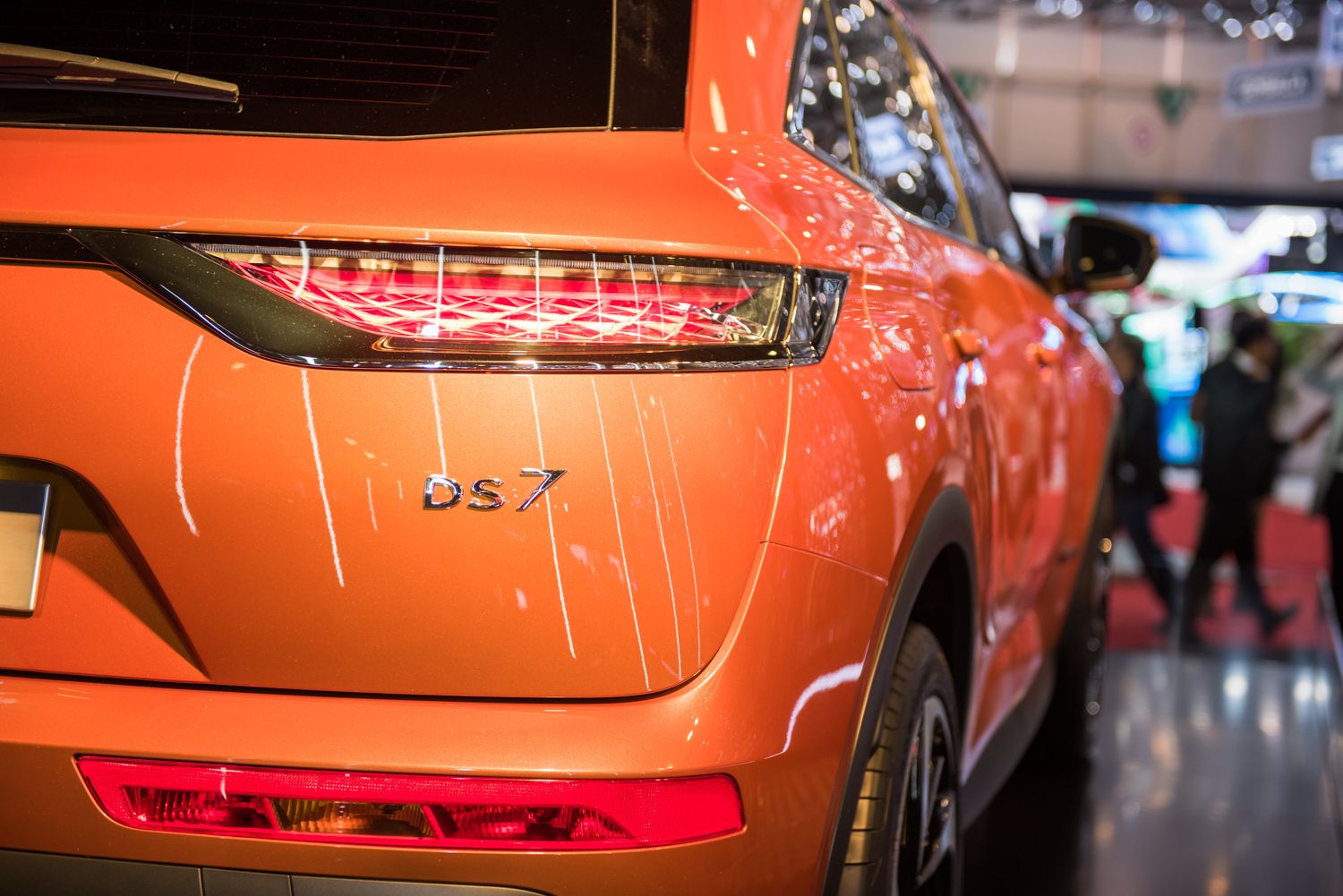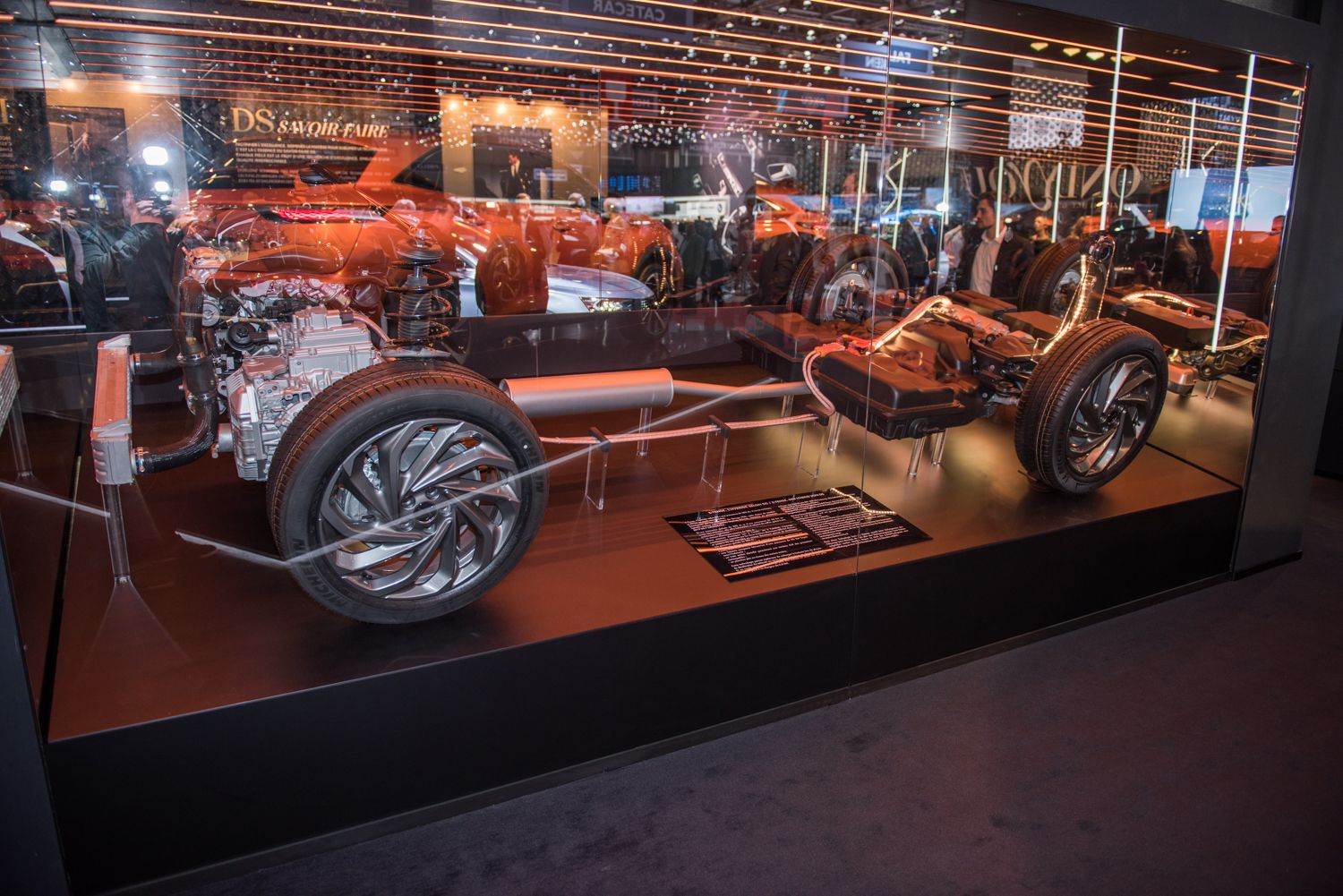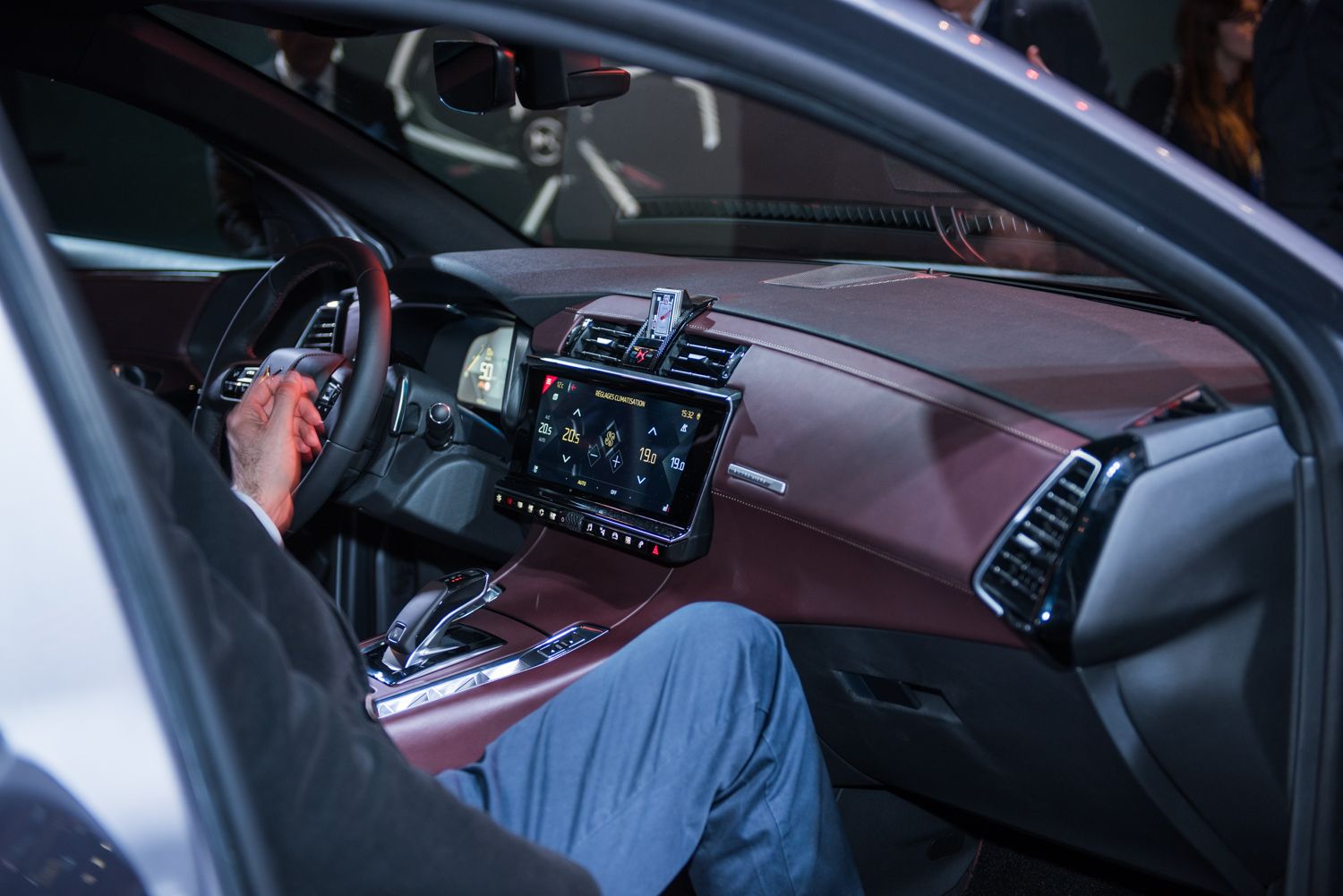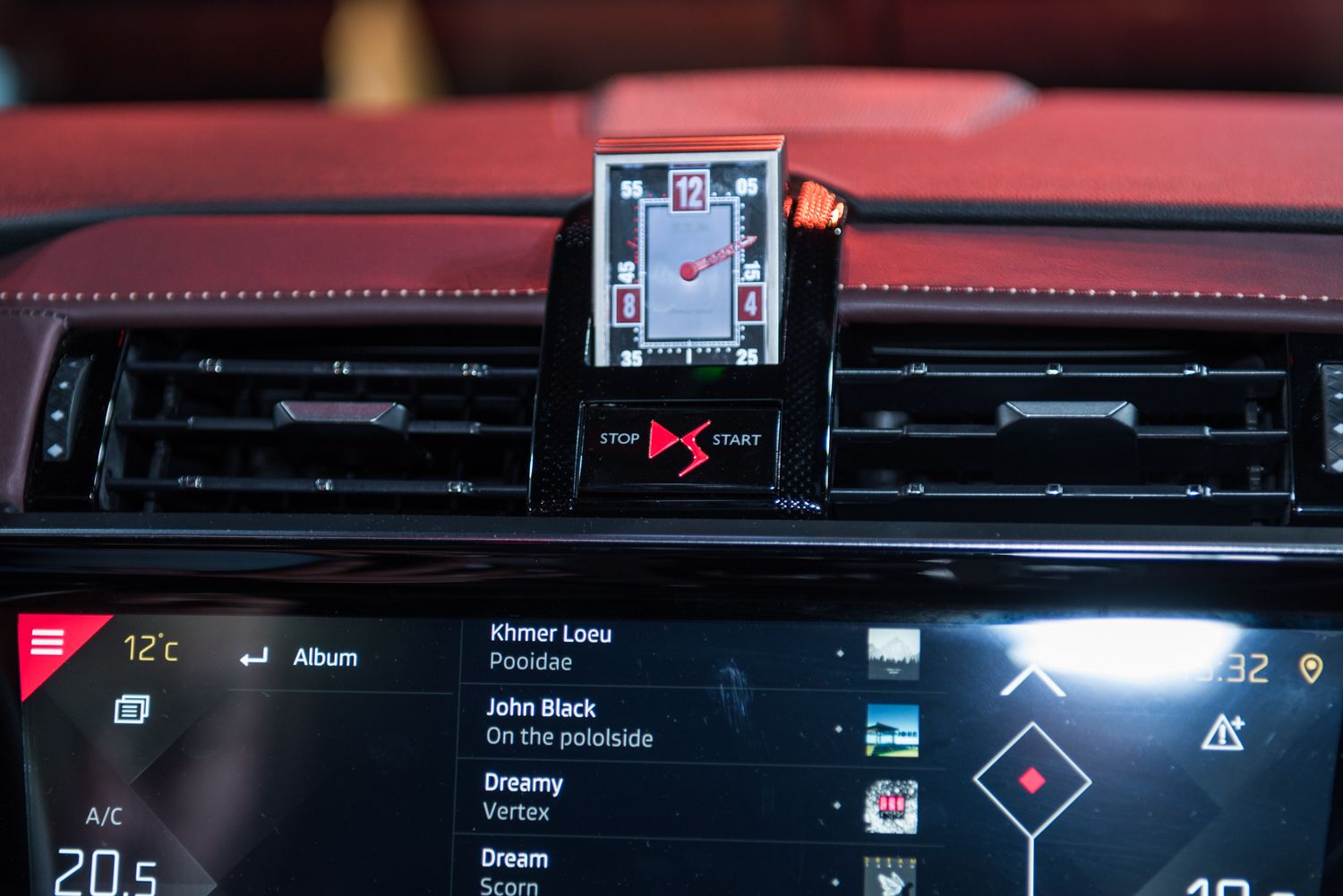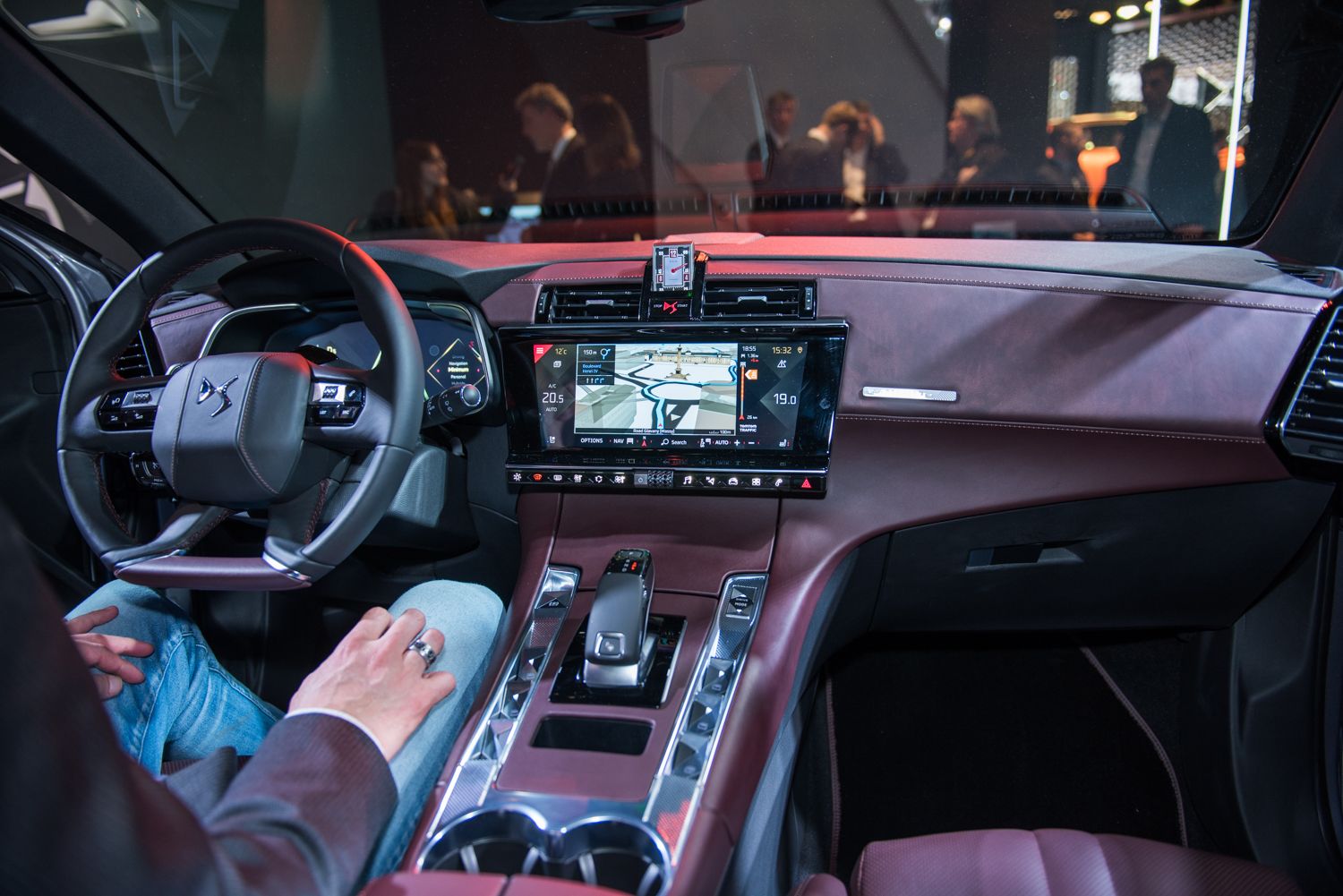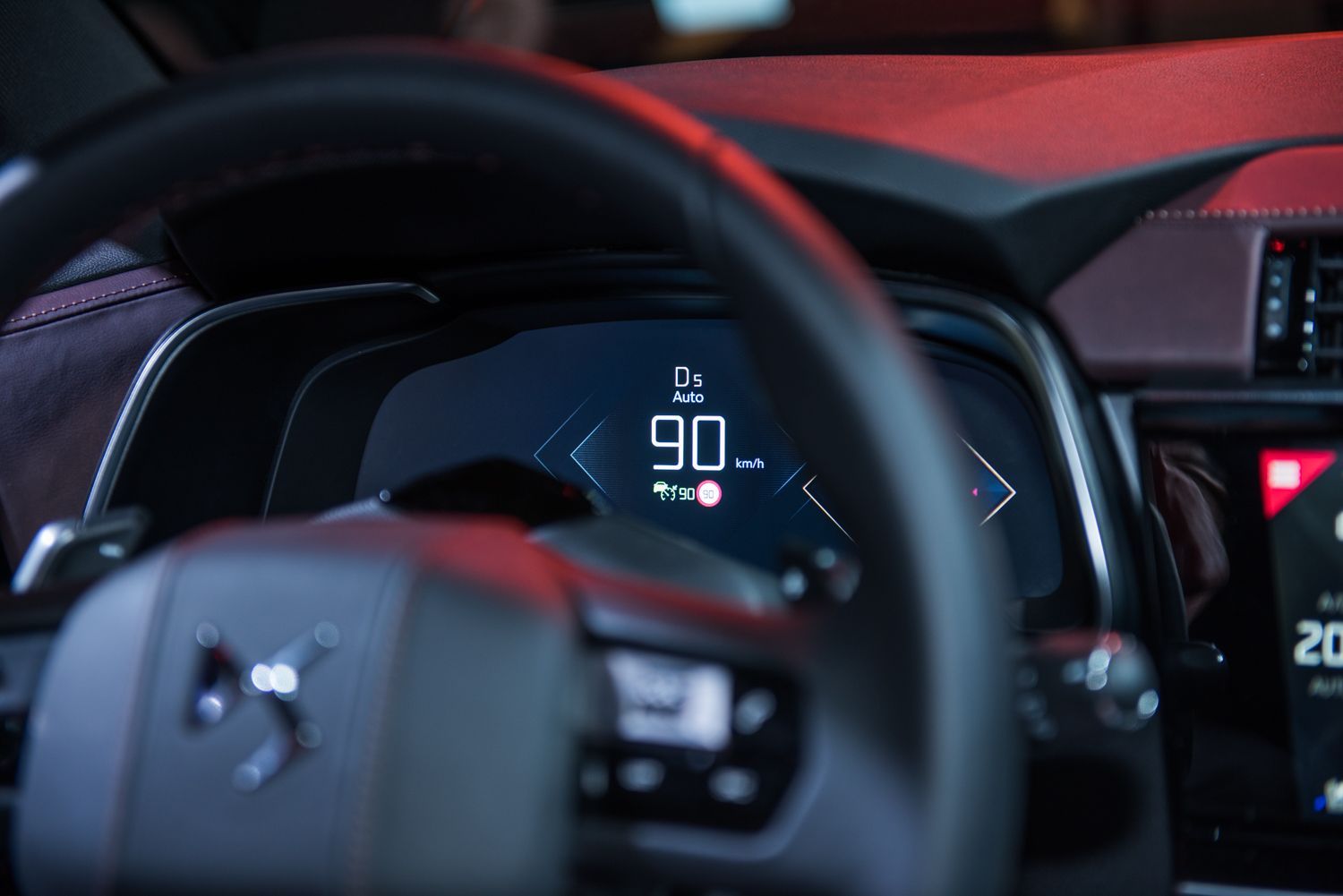Citroën has been around since 1919, but its premium sub-brand, DS Automobiles has only been around since its announcement back in 2009 – making the brand just shy of a decade old. Since then, the brand has released a few concepts and no fewer than six individual models that include the DS 3, DS 6, two iterations of the DS 4, and two iterations of the DS 5. Now with the upcoming Geneva Auto Show, the DS brand is set to release a new SUV, aptly called the DS7.
It will fight against models like the Lexus NX, Audi Q2, and even the BMW X1 – a tall order, but not exactly unfathomable given the looks, luxury, and comfort offered by the brand’s newest SUV… uhem… Crossback. Designed with comfort and performance in mind, the DS 7 features a plug-in hybrid drivetrain that delivers some 300 ponies through all four wheels when needed. Features like DS Night Vision, DS Active Scan Suspension, DS Connected Pilot, and a pair of 12-inch screens inside are present – all of which poses a strong proposition for the competition.
There are even rumors that this newest model could, in fact, bring the Citroën brand – or at least some derivative of it – back to the U.S. for the first time in nearly three decades. Of course, word has it that its initial reentry will be trough a company called TravelCar which would help the brand introduce its newest models to the U.S. market as rental or ride-share vehicles. But, before we get too far ahead of ourselves and get too excited, that’s still some time away, and the DS7 is still headed to Geneva Motor Show. So, let’s take a better look at DS’ newest SUV and talk more about it.
Continue reading to learn more about the DS 7 Crossback.
2018 DS 7 Crossback
- Make: Array
- Model: 2018 DS 7 Crossback
- [do not use] Vehicle Model: Array
Exterior
I’ve never been a big fan of the Citroën brand, but that shouldn’t be too surprising given the brand’s current markets and the sheer amount of time it has been absent from the U.S. But, that wasn’t the only reason – the brand’s cars just never rubbed me right. They always looked a little goofy too me. But, then; Citroën launched the DS brand, and I found it quickly added to my list of favorite manufacturers. Like the models that came before it, the DS7 is sleek and sexy, with lines in all of the right places, and enough power to back up its looks.
Up front, there’s a large grille with a tightly weaved crisscross mesh accented by chrome strips on the sides and bottom. That bottom chrome strip runs almost the full width of the front fascia on a little shelf of sorts that creates the upper foundation for the lower air dam and the recessed corners that house the fog lights. Small, curved LED strips are embedded in the outer edges of the front fascia and serve as daytime running lights. Up above, the headlights take on a unique shape with a flat outer edge. The hood itself is somewhat beefy with raised outside edges, and mild body lines in the center to accompany them.
Moving over to the side profile, we see more of that French ingenuity and brilliant design that’s both pleasing to look at and aggressive enough to draw interest. A single, sharp body line runs from the front fenders to the outermost point of the rear taillight housing, fading smooth between the front and rear doors.
Down below, a slightly concave area adds more character above the plastic cladding that makes up the side skirt. Above the beltline, the DS 7 is well defined with bold chrome trim surrounding the side glass and coming to a sharp point on the upper rear quarter. Low-sitting roof racks sit on the roof and are also finished in chrome to match the taillight housings, front trim, and window garnishing.
Around back, it’s more of the same in a DS kind of way. The hatch itself is somewhat bubble and has jagged edges. The rear overhang in complemented by side panels that give the rear glass a look of depth toward to the top and sides. Down below, the taillights feature a unique and interesting matrix layout and are outlined in chrome.
There are chrome extensions on the rear quarters, just to the outside of the rear hatch seams. However, these are just for looks and don’t appear to house any actual lights. Down below a large reflector resides in each corner of the fascia, while that black cladding extends upward toward to the top of the rear fascia and serves as home for the integrated exhaust outlets and a mild-looking splitter-like element that adds just a little more style to the rear end.
All rear glass is lightly tinted, while the wheels down below feature black gloss accents within the crevasse of each spoke. According to DS, the LED headlights are active and adapt in width and range based on road conditions and vehicle speed. The system is called Active LED Vision, and are made up of the main LED units and three rotating modules that can swivel up, down, left, and right. It seems as if the system is fully automatic and cannot be adjusted manually, but can be set to a number of different modes that include Town Beam, Country Beam, Motorway Beam, Adverse Weather, and High Beam.
The Competition
There are a number of competitors in the compact SUV segment, but word has it that DS is aiming primarily at models like the BMW X1 (above) and the Lexus NX (below.) Competing against models like these isn’t easy by any means, even in terms of exterior design. Take the X1, for instance. It’s essentially a low-riding SUV with the sporty characteristics of smaller BMW cars like the 2 and 4 Series.
Up front, it’s got the traditional kidney grilles to go with a wide mouth air dam down below and fake corner vents that add a bit of sporty flair to the front end. The hood isn’t anywhere near as muscular or defined as that of the DS7, but that’s okay because the X1 looks right just the way it is. Where the DS7 has small headlight lenses and square fog lights, the X1 gets larger, geometrically sound headlights that are taller on the outside than the inside, while it’s fog lights are round and integrated into the front fascia above the recess in the corners.
The X1 differs from some other BMW models as the side profile is actually somewhat aggressive and comparable to that of the DS 7. A distinct body line resides below the beltline and follows the same grade as the beltline itself. The roof is sloped downward toward the rear which makes the stationary rear quarter glass look bigger than it is from a distance. Around back, BMW kept things fairly basic with split taillight units and thick cladding on the lower fascia that also houses a silver insert with the exhaust outlets just below it. In a sense, the X1 has morphed into a baby X5, so if you’re a fan of the X5, you’ll most certainly dig the updated X1.
The Lexus NX, on the other hand, is still a toddler in Lexus’ lineup as it was just introduced for the 2015 model year. That means it’ll be a couple of years old when the 2018 DS 7 hits dealers, but its looks are bold and should still be well within the grid of attractiveness when that time comes.
Up front, the NX sports Lexus’ spindle grille to go with triangular headlights, a horizontally embedded LED strip, and a deep gouge in each corner of the front fascia. Sitting at the lowest possible point in each corner is a thin LED fog light that blends into the fascia with near perfection thanks to the lip just below it.
The side profile isn’t quite as bold as that of the DS7 or the X1, for that matter, but the mild body line below the waist and the lines down below that cut a triangular shape into the body just somehow works. It does look a little awkward from the side when you look at the front fascia because of those weird gouges, but it’s sporty nonetheless.
The roof slopes downward steeply beyond the rear doors to create a bubbly look from the side, but that look is toned down quickly thanks to a long overhand with side wings and a steep downward curve just below the rear glass. The rest of the rear end is uneventful with a large piece of cladding covering most of the lower fascia, but the taillights do add a bit of extra flare here. The feature an odd, two-point outer edge and more of a flat inner edge with the red portion of the lens extending just a bit farther than the rest and coming to a point at the lift handle on the hatch.
Making a decision between the DS 7, X1, and NX based on looks alone would be pretty tough knowing that there’s so much more to cover. But if looks are more important to you, you’ll find that the DS7 is the more aggressive of the three, while the NX is more toned down and casual. The X1 sits right in the middle. Personally, I would want to go with the DS 7 or the NX, but the Bimmer isn’t exactly ugly either. But, you’re better off ignoring brand loyalty at first and looking at all three with an open mind – none of them are ugly by any means.
Exterior Dimensions
|
BMW X1 |
Lexus NX |
DS 7 Crossback |
|
|
Wheelbase (Inches) |
105.1 |
104.7 |
TBA |
|
Length (Inches) |
175.4 |
182.3 |
179.92 |
|
Width (Inches) |
71.7 |
73.6 |
74.49 |
|
Height (Inches) |
62.5 |
64.8 |
63.77 |
|
Track front/rear (Inches) |
61.5/61.6 |
62.2/62.2 |
TBA |
Interior
If you’re in need of being amazed, you’ll get that feeling and more when you look inside the DS 7. As a “premium” brand, we come to expect a certain level of comfort and luxury from DS, and the DS 7 certainly delivers in that regard. The first thing you’ll notice is the two-tone interior that blends two colors in perfect harmony. Most of the dash, door panels, and center console are all wrapped in the same thick leather that is tightly fitted to each seat and sewn together with precision.
A black, flat-bottom steering wheel sits ahead of the driver and looks to feature white contrast stitching – at least on the central hub, anyway. The upper two spokes get an array of thumb buttons that are used to control various digital features of the dash and infotainment system, while the bottom two spokes are garnished with a tiny strip of chrome to add just a little more contrast. That same chrome can be found surrounding that angled, corner HVAC vents and the analog clock that sticks out of the top of the dash.
The DS 7 features two 12-inch display screens – one in use as a digital instrument cluster that has a unique layout and the other used as a display for the infotainment system and most other controls like HVAC functions and some front seat functions. A number of buttons grace the bottom of the central display, but that’s okay because the rest of the vehicle, including the doors, is practically void of any physical switches.
The gear shifter sits forward in the center console just behind a door that opens to reveal a small storage area, while the garnishing that surrounds the cupholders extends along the edges of the center console toward the dash. Models that don’t get leather get healthy doses of Alcantara or wood adhered to the various trim components that are otherwise wrapped in leather.
DS has yet to release images of the rear seating and rear cargo areas, but it’s likely that rear seat passengers have their own HVAC control system. I would suspect the rear seatbacks are capable of laying down as well. All told, it’s a pleasing interior, to say the least, and right on par to take on the rest of the premium models in this niche. Not bad, DS; not bad.
The competition
When it comes to the BMW X1, it’s not exactly a slouch when it comes to interior style, function, and comfort, but it’s – sadly – not exactly on par with the DS 7. For instance, the vehicle comes standard with cloth seats, and a smaller infotainment display, but leather can be optioned as can an 8.8-inch display and a 12-speaker Harman Kardon sound system. Otherwise, the steering wheel comes wrapped in leather but isn’t sporty by any means, and most of the trim is primarily plastic.
With the update to the X1, passenger volume increased a bit, and there’s now 15-percent more cargo room when the rear seats are folded flat. There’s a traditional analog instrument cluster with two primary gauges, outlined in chrome that matches that of the dash trim and door handles. Don’t get me wrong, it’s not a bad place to spend a few hours by any means, but unless you’re willing to pay up for various options, you might be better off looking at other options.
Then you’ve got the Lexus LX, which is quite literally right in the middle when compared to the DS 7 and the X1. Lexus went all out and gave the NX soft touch surfaces just about everywhere, including the dash, door trim, seats, and parts of the center console. It does have a semi-digital gauge cluster, and some models get aluminum pedals as well. The F Sport model gets contrasting stitching on the dash, while other trim levels get some wood-grain garnishing.
The seat backs offer ample side support while the seat cushions are more toned down but a wrapped in contrasting color. On the technology front, you’ll find that the NX has features like a remote touchpad that allows you to control the infotainment display much like you do a smartphone, to go with Lexus’ Enform connect suite, and even a wireless charging bay. Definitely not a bad place to spend time, and well worth your consideration.
Interior Dimensions
|
BMW X1 |
Lexus NX |
DS 7 Crossback |
|||
|
BMW X1 |
Lexus NX |
DS 7 Crossback |
41.9/39.4 |
38.2/38.1 |
TBA |
|
Headroom front/rear (Inches) |
40.4/37.0 |
42.8/36.1 |
TBA |
||
|
Legroom front/rear (Inches) |
55.6/55.2 |
57.3/55.3 |
TBA |
||
|
Shoulder room front/rear (Inches) |
17.8-54.7 |
17.7-54.6 |
22.17 |
Drivetrain
The DS 7 will be available with several drivetrain options, but the most important is the E-Tense hybrid powertrain first available on this model. It features a 200-horsepower engine paired with an eight-speed automatic transmission that drives the front wheels. A 13 kWh battery hidden in the floor below the second row supplies power to the two electric motors on the rear axle that delivers 109 horsepower to each rear wheel. Total system output is rated at 300 horsepower, but the hybrid nature of this setup allows for four-wheel-drive capability.
|
Engine |
E-Tense hybrid |
|
Front engine |
200 HP |
|
Transmission |
eight-speed automatic |
|
Electric motor rear |
109 HP |
|
Total output |
300 HP |
|
Battery |
13 kWh |
|
Charging time |
4.5 hours in standard mode or less than 2.5 hours in fast mode with a 6.6 kW charger |
With this drivetrain setup, you can run up to 37 miles in all-electric mode; experience increased fuel economy with hybrid mode or combined mode which uses the electric and gas-driven powertrain all at once for the most power output and higher performance. Charging time for the hybrid system is rated at 4.5 hours in standard mode or less than 2.5 hours in fast mode with a 6.6 kW charger attached to a 32-amp socket.
Outside of the hybrid drivetrain, the DS7 will be available with three different gasoline engines and two diesel units that offer varying levels of power. On the gasoline front, there’s the THP 225 S&S paired with the EAT8, eight-speed automatic, the THP 180 S&S that’s paired to the same transmission, or the PureTech 130 S&S that’s paired to a six-speed manual. On the diesel front, you can choose between the BlueHDi 130 S&S or the BlueHDi 180 – both of which are paired with that EAT8 automatic transmission. No specs or performance figures have been released for any of the engines, but we’ll surely learn more about this in Geneva and closer to the DS 7’s official launch.
But, it’s not all about drivetrain options when it comes to the DS7. See, the DS7 comes with some driver assistance and semi-autonomous features. First off, it comes with DS Connected Pilot, which is basically an autonomous system that makes use of Stop and Go technology, DS’ version of lane-keep assist, and there’s even DS Park Pilot, a feature that allows the car to back its self into a straight spot or parallel park without manual input to the wheel from the driver.
The lane-keep assist function works at speeds up to 112 mph while the Park Pilot system will operate and scan for parking spaces that will accommodate the DS7 at speeds as high as 18 mph and will park itself at 3 mph or less. Next on the list, there’s DS Night Vision, which uses an infrared camera to detect obstacles in the road and warn the driver via the instrument cluster of anything up to 300 feet away.
DS Active LED Vision takes control of the LED headlamps and adjusts them as needed based on various settings, road conditions, and vehicle speed. Finally, DS Active Scan Suspension, allows the car to monitor the road conditions ahead and adjust various things like the brakes, steering, and suspension load to make for a smoother ride.
The Competition
Note: BMW X1 drivetrain pictured here.
Here in the U.S., the BMW X1 is offered with just one drivetrain configuration – a 2.0-liter four-banger with 228 horsepower and 258 pound-feet of torque. It gets the X1 to 60 mph in 6.3 seconds on the way to a top speed of 130 mph. Over in markets like the U.K., however, the X1 is available with various versions of the 2.0-liter four-cylinder that includes a 2.0-liter diesel with 150 horsepower and 243 pound-feet of torque.
Based on the U.K. scale, this engine can achieve 51.4 mph in the city, 65.7 mpg on the highway or 60.1 mpg combined. 62 mph comes in 9.2 seconds and tops out at 126.76 mph. In the 20d X1 models, that same 2.0-liter is tuned to deliver 190 horsepower and 295 pound-feet of torque. Fuel economy figures drop to 49.6 mpg in the city, 65.7 mph on the highway, and 58.8 mpg combined. With this configuration, you’ll hit 62 mph in 7.6 seconds and will top out at 136.70 mph.
Rounding off the diesel offerings, you’ll get that 2.0-liter with 231 horsepower and 331 pound-feet of torque. This setup will net you a 62-mph sprint in 6.6 seconds and a top speed of 146.02 mph. Fuel economy figures sit at 48.7 mpg in the city, 61.4 mpg on the highway, and 55.4 mpg combined. The only gasoline setup offered on the current X1 includes a 2.0-liter four-banger with 192 horsepower and 206 pound-feet of torque. The gasoline drinker will get you 37.2 mpg in the city, 50.4 mpg on the highway, and 44.8 mpg combined. This engine will push the X1 up to 62 mph in 7.4 seconds and get you going as fast as 138 mph.
|
BMW X1 sDrive18d |
BMW X1 sDrive20d |
BMW X1 sDrive20i |
BMW X1 sDrive25d |
|
|
Engine |
2.0-liter four-cylinder |
2.0-liter four-cylinder |
2.0-liter four-cylinder |
2.0-liter four-cylinder |
|
Horsepower |
150 HP @ 4,000 RPM |
190 HP @ 4,000 RPM |
192 HP @ 5,000-6,000 RPM |
231 HP @ 4,400 RPM |
|
Torque |
221 LB-FT @ 1,750 RPM |
295 LB-FT @ 1,750-2,500 RPM |
206 LB-FT @ 1,350-4,600 RPM |
331 LB-FT @ 1,500-3,000 RPM |
|
0 to 62 mph |
9.2 seconds |
7.6 seconds |
7.4 seconds |
6.6 seconds |
|
Top Speed |
127 mph 136 mph |
138 mph |
146 mph |
Note: Lexus NX drivetrain pictured here.
When it comes to the Lexus NX, European countries typically have the choice of a single gasoline drivetrain in the 200t F Sport or the hybrid drivetrain offered in the 300h. The 200t comes with a 2.0-liter engine that offers variable valve timing, 234 horsepower, and 258 pound-feet of torque. This drivetrain setup is enough to push the NX up to 62 mph in 7.1 seconds on the way to a top speed of 124 mph. Fuel economy, on the other hand, falls far short of the X1, for instance, with the NX garnering just 27.2 mpg in the city, 43.5 mpg on the highway, and 35.8 mpg combined.
If you’re more interested in the hybrid drivetrain, you’ll find that it’s offered in a number of different packages that range from the entry-level 300h S all the way up to the 300h F Sport, but the power output remains the same across the board. This setup pairs a 2.5-liter gasoline engine that’s paired with nickel-metal hydride battery and a 140-horsepower electric motor. Total power output is rated at 194 horsepower, but going with the 300h F Sport will get you all-wheel drive, so there’s that on the table as well.
The entry-level model manages to achieve 56.5 mpg in the city, on the highway, and combined, according to Lexus, while the upper trim levels manage to pull 53.3 mpg in the city, 55.4 mpg on the highway, and 54.3 mpg combined.
Obviously, on a fuel economy front, you’ll want to consider the BMW X1 as certain trim levels seem to dominate when it comes to getting the best mileage, but we’ve yet to see fuel economy figures for the various drivetrain options available on the DS 7. The NX, I suspect, will fall right in the middle between to two, which could still make it a viable option.
|
Lexus NX 200t |
Lexus NX 300h |
|
|
Engine |
2.0-liter 16-valve DOHC |
2.5-liter 16-valve DOHC, with VVT-i |
|
Horsepower |
238 HP @ 4,800-5,600 RPM |
155 HP @ 5,700 RPM |
|
Torque |
258 LB-FT @ 1,650 RPM |
154 LB-FT @ 4,200-4,400 RPM |
|
Engine |
- |
AC synchronous, permanent magnet |
|
Battery |
Nickel-Metal hydride |
|
|
0 to 62 mph |
7.1 seconds |
9.2 seconds |
|
Top Speed |
124 mph |
112 mph |
Pricing
Pricing for the DS7 has yet to be released, and won’t be until closer to its launch. Considering it is going to fight against models like the BMW x1 and Lexus NX, however, gives us a rough idea. Pricing will probably start out somewhere between £27,000 and £30,000 and could increase to as much as £40,000 for the range-topping model.
Competitive Pricing
At the time of this writing, the BMW X1 starts out at £27,850 for the sDrive 18d SE and climbs to as much as £37,130 for the xDrive25d xLine or M Sport models. The Non-hybrid Lexus NX starts out at £39,595 while the 300H is priced between £30,995 for the entry-level model and £44,245 for the range-topping 300h Premier.
|
BMW X1 sDrive 18d SE |
£27,850 |
|
BMW X1 sDrive18d Sport |
£ 29,350 |
|
BMW X1 xDrive18d SE |
£29,350 |
|
BMW X1 xDrive20d Sport |
£ 31,700 |
|
BMW X1 xDrive25d xLine |
£ 37,130 |
|
BMW X1 xDrive20i Sport |
£32,345 |
|
BMW X1 xDrive20i M Sport |
£33,845 |
|
BMW X1 xDrive20i xLine |
£ 33,845 |
|
Lexus NX 200t F Sport |
£39,595 |
|
Lexus NX 300h S |
£30,995 |
|
Lexus NX 300h SE |
£32,995 |
|
Lexus NX 300h Sport |
£33,995 |
|
Lexus NX 300h Luxury |
£35,995 |
|
Lexus NX 300h F Sport |
£38,245 |
Other Options
Audi Q2
If you’re considering the BMW X1 or the Lexus NX, then you’ll also want to take a quick look at the Audi Q2. It’s currently Audi's smallest SUV offering, and it typical Audi fashion, blends subtle hints of aggressiveness with a toned down look. The interior is comfortable and fitted with decent technology, like a semi-digital instrument cluster, large infotainment display, and even a flat-bottom steering wheel.
On the drivetrain front, the Q2 is offered wth a number of different engines including a 1.0-liter three-banger with 116 horsepower, a 1.4-liter with 150 horsepower, and a 190 horsepower 2.0-liter – all three of which drink gasoline. On the diesel front, there’s a 1.6-liter four-cylinder with 116 horsepower, or two variations of a 2.0-liter, one with 150 horsepower and one with 190 horsepower. The offerings aren’t bad, but it’s not likely that the new Q2 will be able to keep up with the DS 7, so you may need to step up to a larger Q model if you’re interested more in power than anything else.
Pricing for the Q2 starts out right around $33,000 at current conversion rates, so it’s right about in line with where the DS 7 will likely sit on the pricing scale.
Read our full review on the Audi Q2 here.
Conclusion
There’s still a little bit that we don’t know about the DS7, but from the way it looks and what we do know, it should certainly be a strong proposition for the competition. The car is aggressive and sexy while still providing ample luxury and a fairly large amount of technology for a car that doesn’t rock a BMW or Mercedes Badge.
What will really make or break it, however, will be the price point. If DS tries to price it too high, it may fall victim to the brand loyalty that surrounds the competition. But, if you can look past the badge, and actually give the DS 7 a chance, you’ll find that it’s an interesting little SUV and more than capable of keeping you happy and comfortable.

